WORK
The lines are searched, and the points are found.
Juan Butten
This exhibition , shows a series of 20 miniature pieces created , for the most part, with recycled materials that have been collected on the beaches of the artist country Juan Butten. This exhibition invites reflection on the seriousness of pollution in the oceans. Currently, the amount of plastic waste floating adrift is so preoccupant that is predicted to even exceed the number of fish by 2050. In the In recent years, numerous ‘islands’ of garbage have been detected on the high seas, mainly in the Pacific Ocean, and thousands of animals have been found dead on the coasts due to the waste ingestion.
These collected materials, which harm our ecosystem, were used to represent a part of our folklore and, at the same time, rescue fragments of our history. In works, the relativity of the effect of time on things is highlighted, emphasizing that, despite their passage, they only alter their beauty, but they do not lose it. The recreation of these scenarios seeks to capture the beauty that arises from change. The implementation of recycled materials reminds us of the social responsibility we have with the environment and evokes a feeling of nostalgia, reminding us that not everything has an expiration date and that not everything must be deleted. It emphasizes that all stages are beautiful and necessary, a principle that is It can apply both in the case of structures and in the case of things and people. It reminds us that, although we cannot live in the past, it is not so easy to erase it from our essence, since the impact of time is undeniable and immutable, and a parallelism is an obvious relationship between what rust represents for zinc and wrinkles for a person. Although some aesthetic procedures try to erase them, wrinkles remind us that we have lived.
La balsa
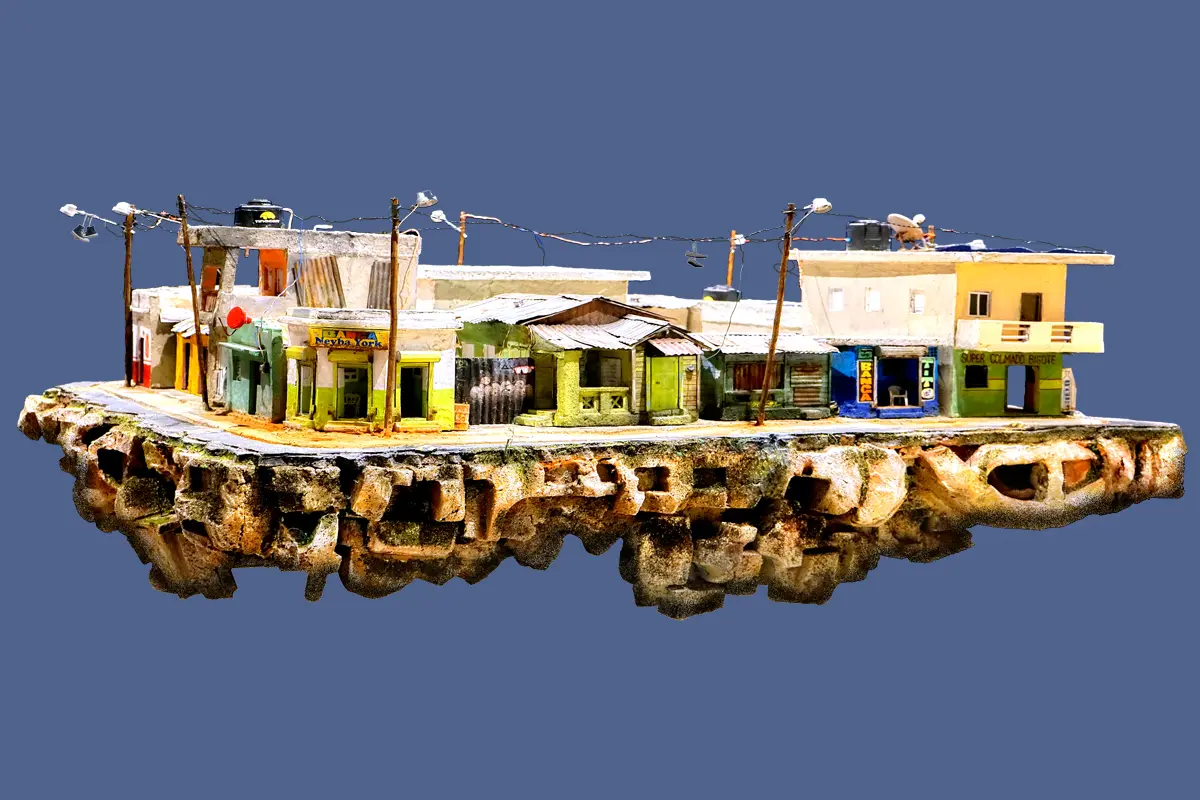
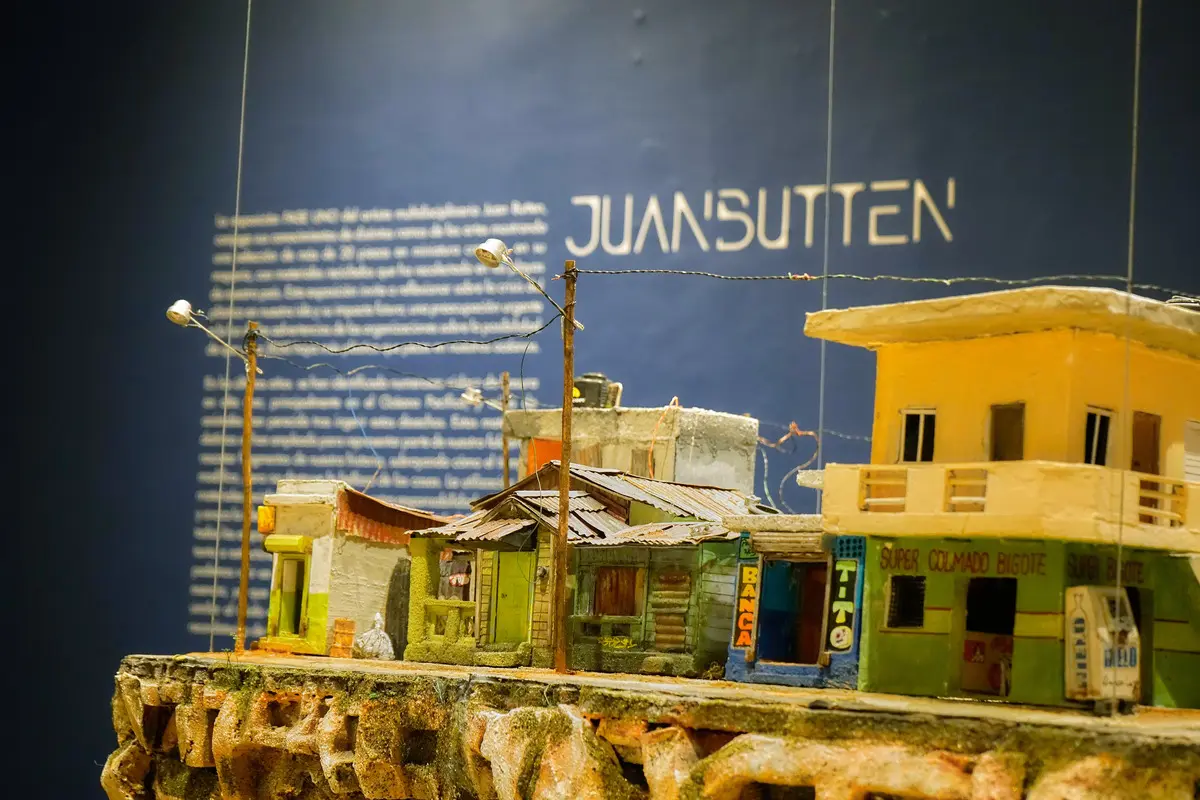
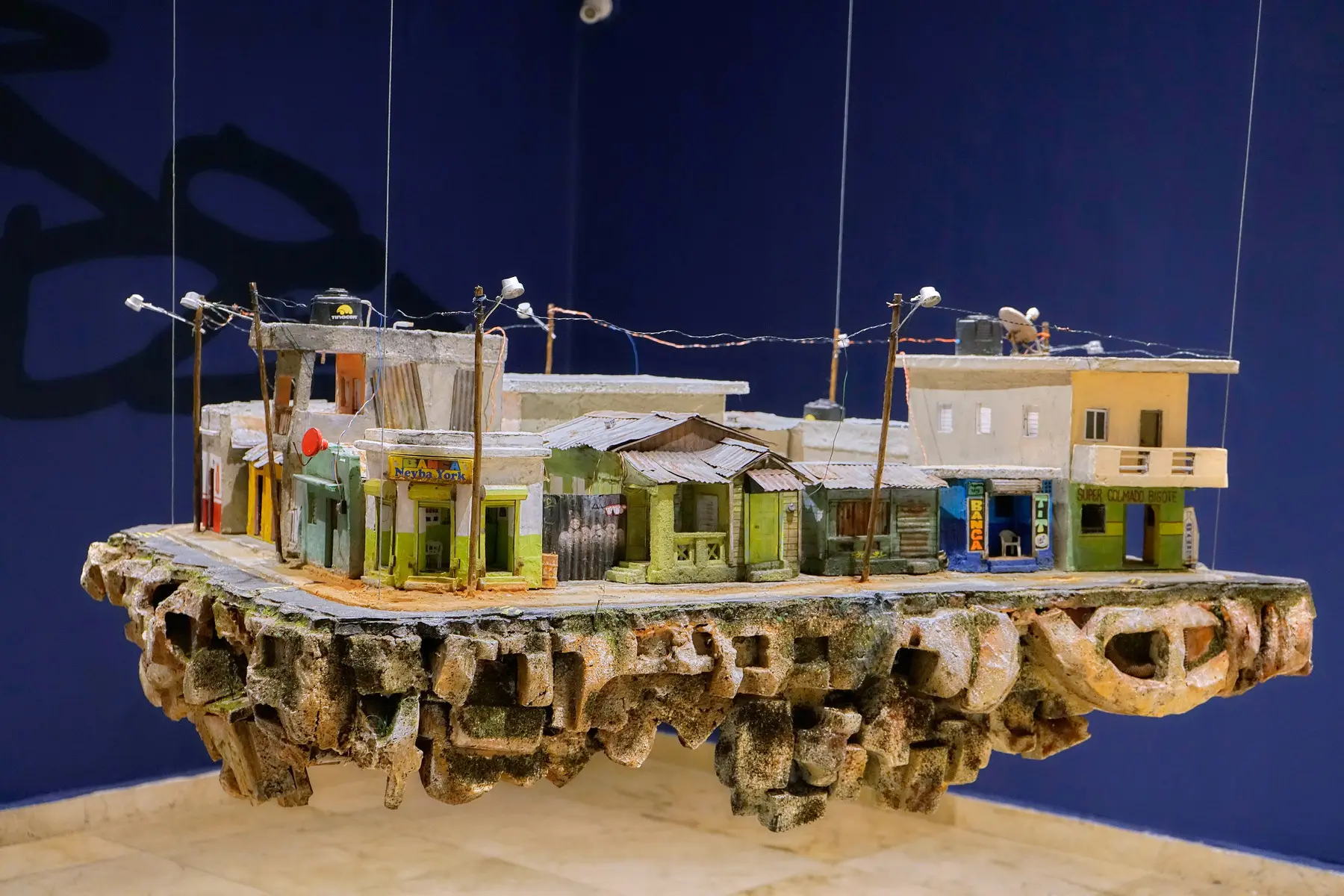
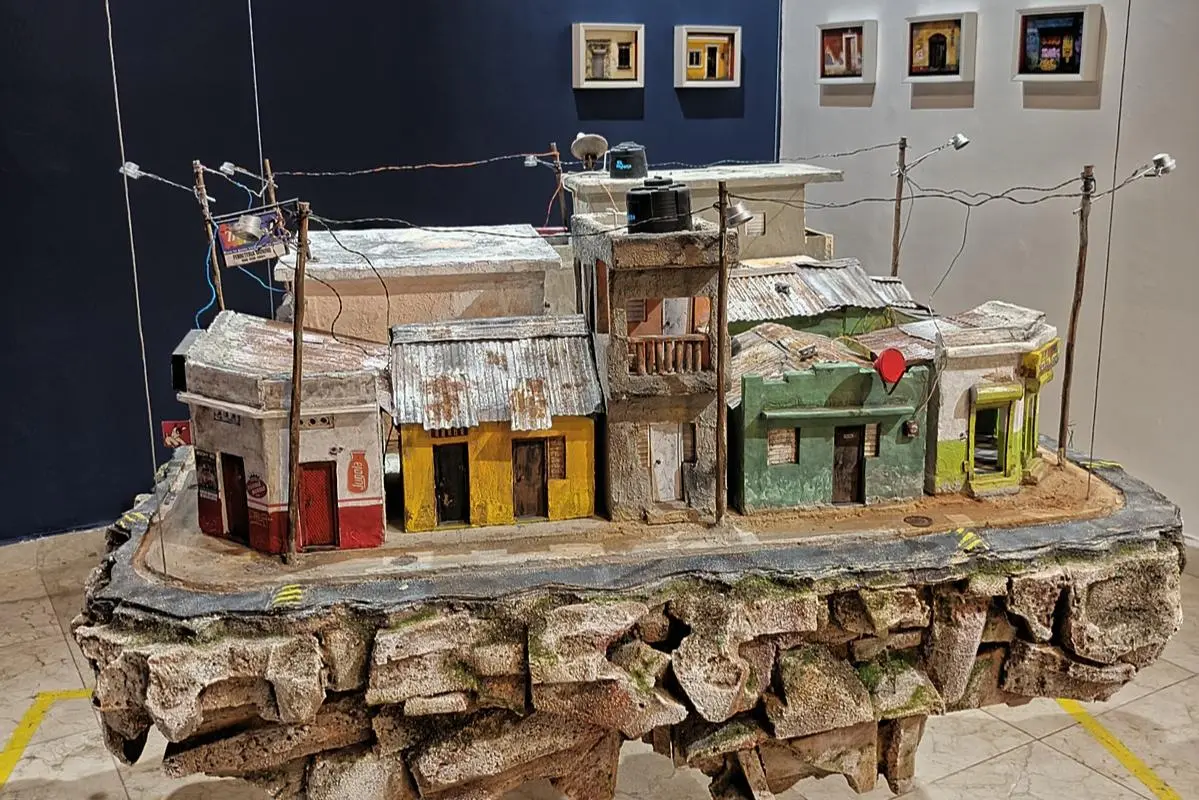
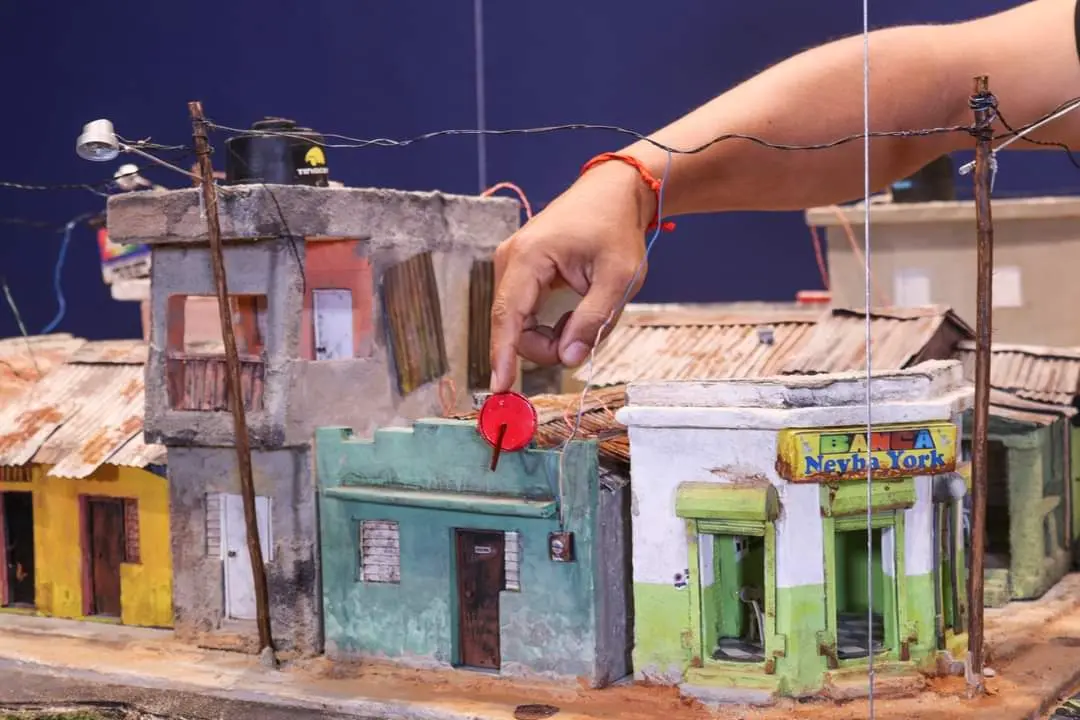
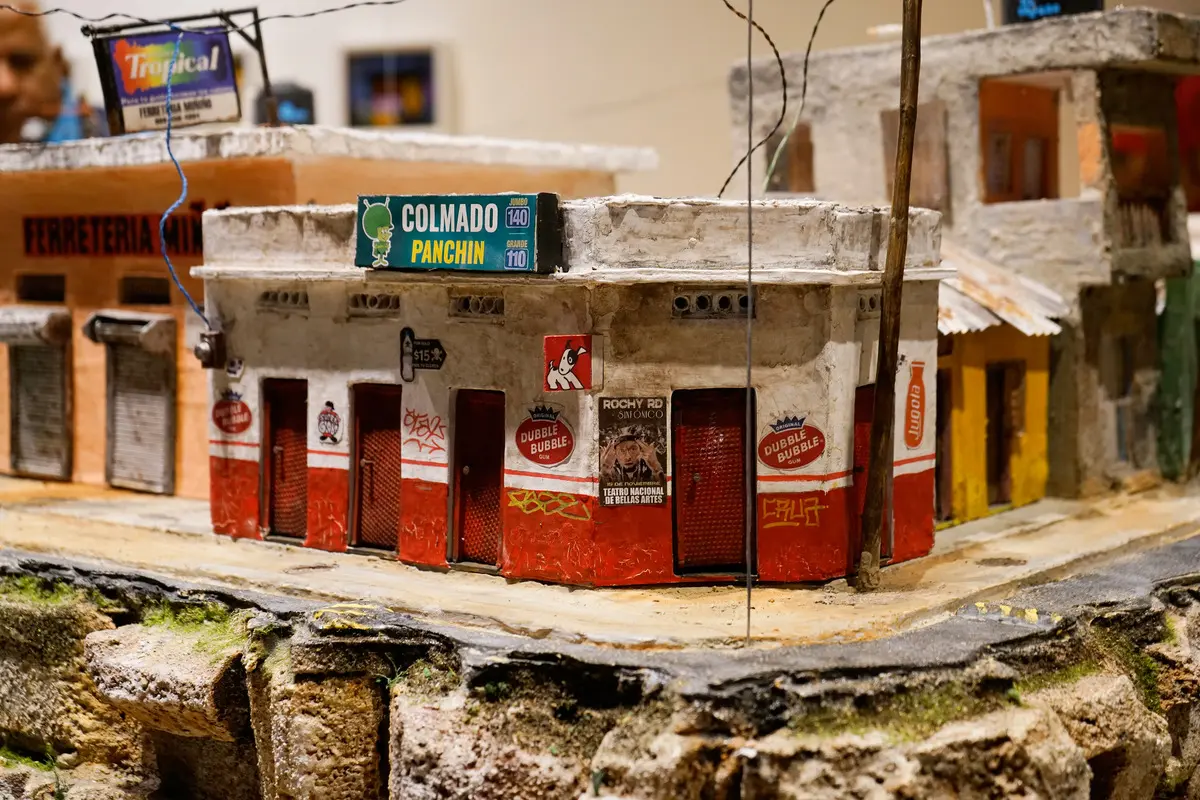
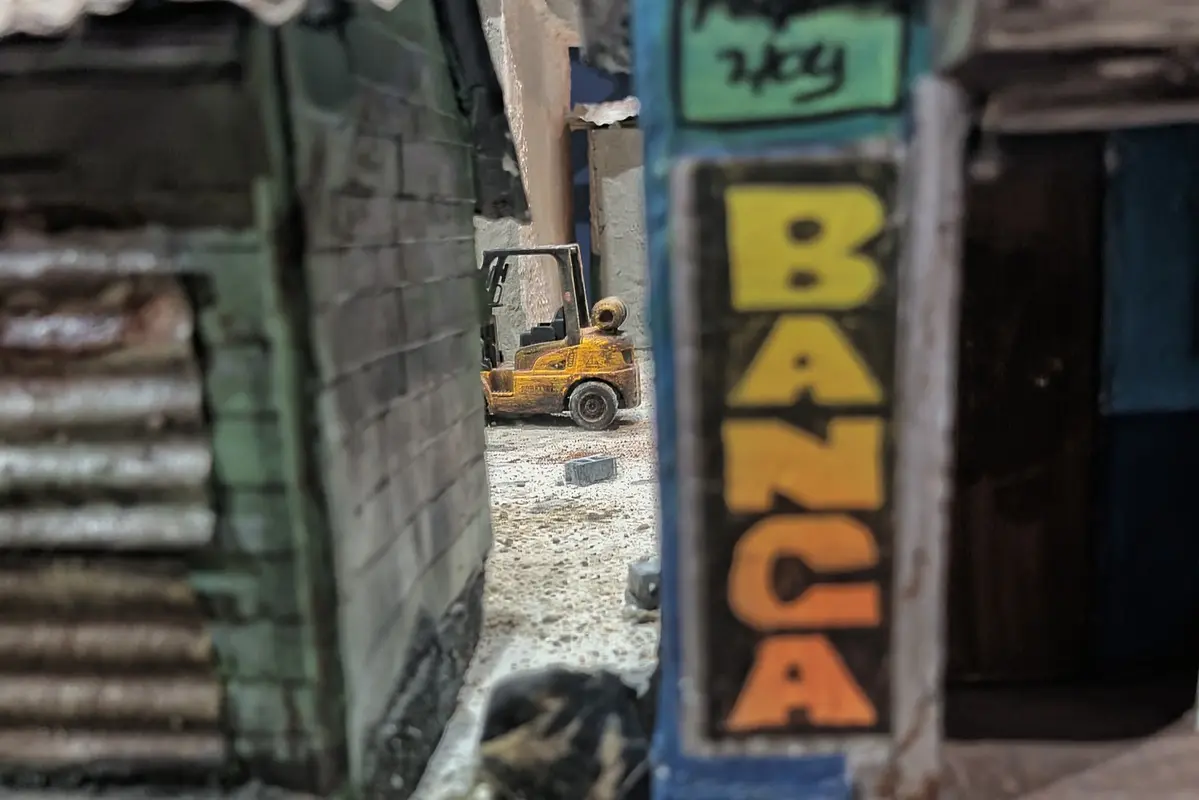
“La Balsa” is a floating piece featuring 13 constructions with various uses: residential, commercial, and mixed. It forms a complete corner that could be found in any “hood”* of this city, with a communal courtyard where daily activities take place, and the objects left behind indicate the rhythm of everyday life. These structures are modeled after neighborhoods like Villa Francisca, Villa Duarte, and San Carlos, among others. Their colors suggest that the inhabitants migrated from the countryside to the city to start families and find ways to survive, often running small businesses such as colmados, hardware shops, and building second-floor rentals.
Year: 2019-2023 , Medium :Recycled Materials ,Scratchbuilt Exhibited: 1.Fase Uno ,2023, Centro Cultural España, Santo Domingo, Dominican Republic and 2.Casas+Islas, 2024, Punto Urban Art Museum, Salem, Ma
Yolanda Butten

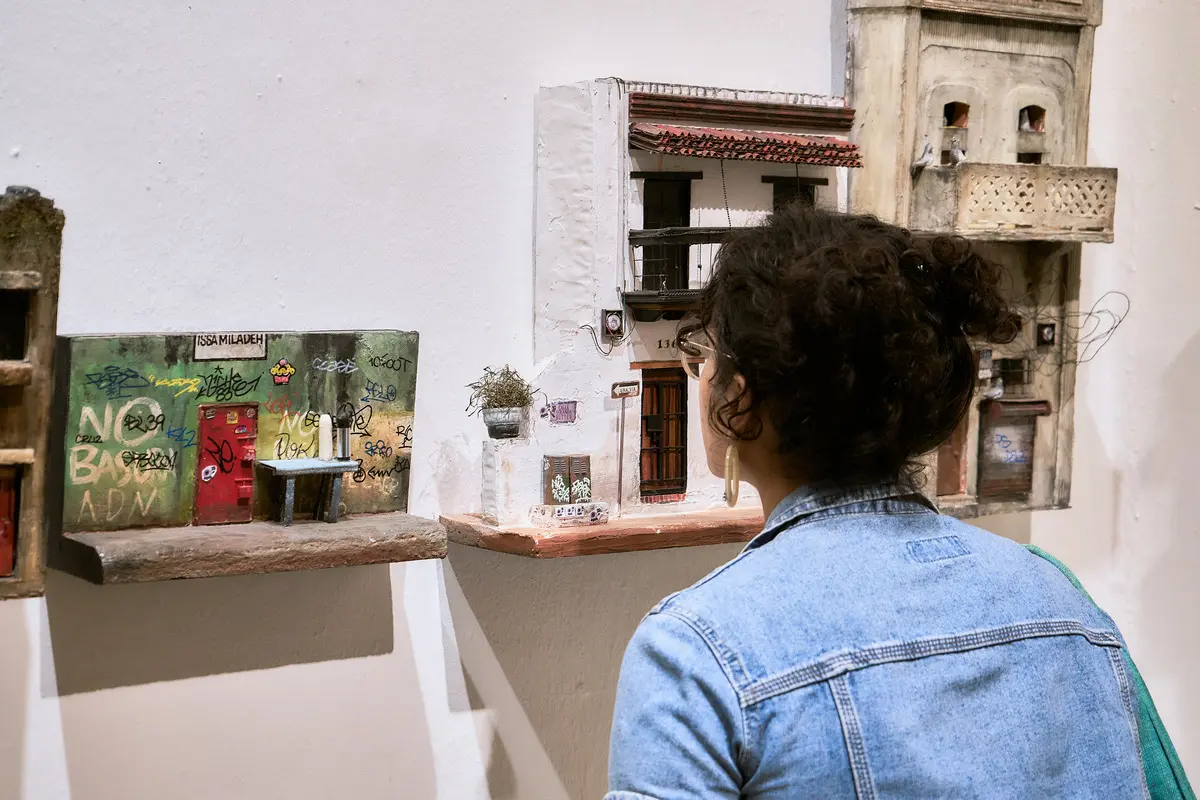
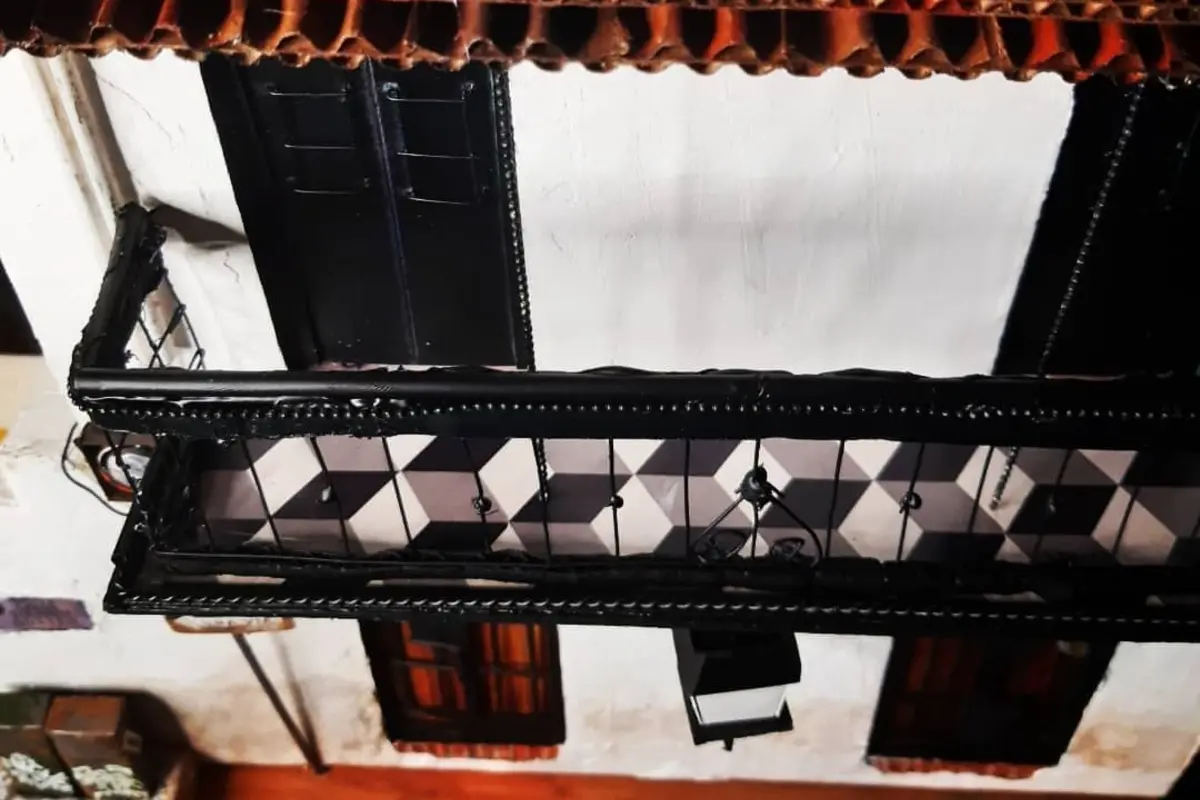
“Yolanda Butten” this piece presents a tridimensional facade of a colonial house in the First City of America. It evokes the memory of the author’s mother, who used to highlight the beauty of the house when walking with her son. Originally, the wall had a sign with the name of the street, Isabel La Católica. In honor of his mother, the author replaced the sign with his mother’s name: Yolanda Butten, who influenced his early years by motivating him in different branches of art.
Year:2019, Medium: Recycled materials from the beaches of Santo Domingo,Hand Made, Exhibited: 1.Fase Uno ,2023, Centro Cultural España, Santo Domingo, Dominican Republic and 2.Casas+Islas, 2024, Punto Urban Art Museum, Salem, Ma
Vueltas al globo

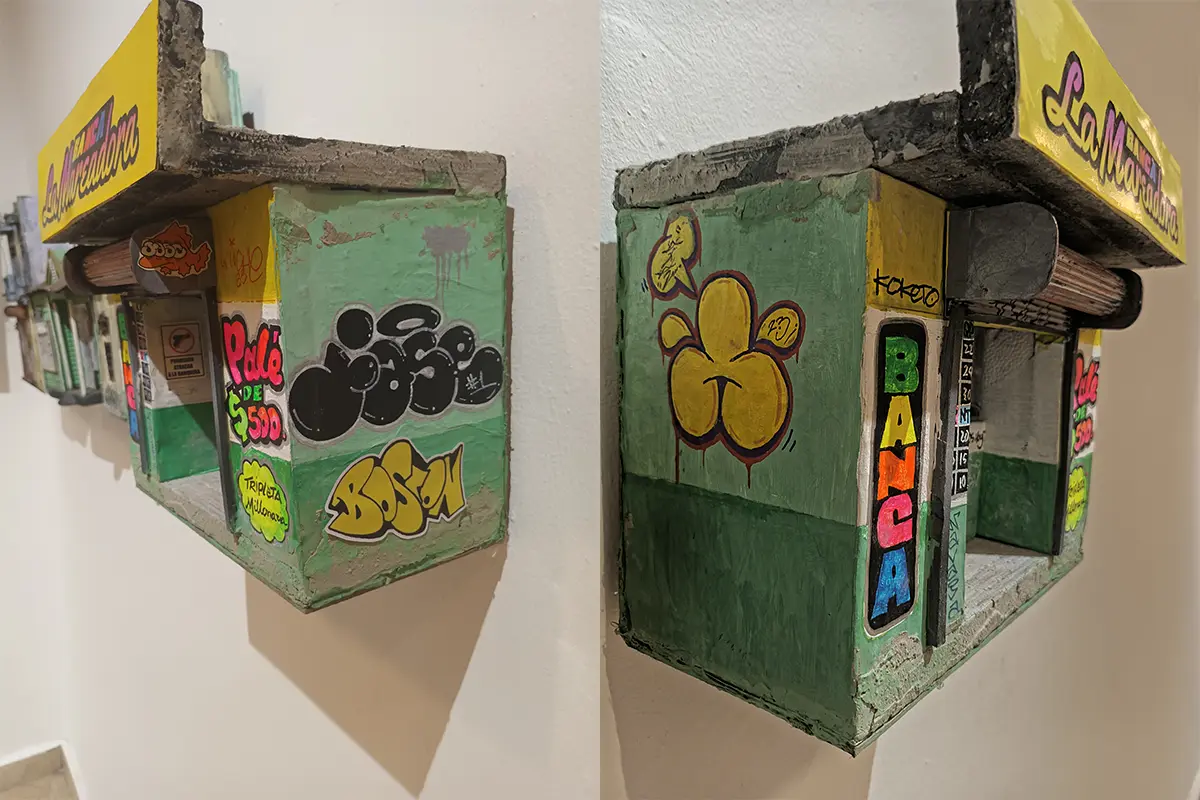
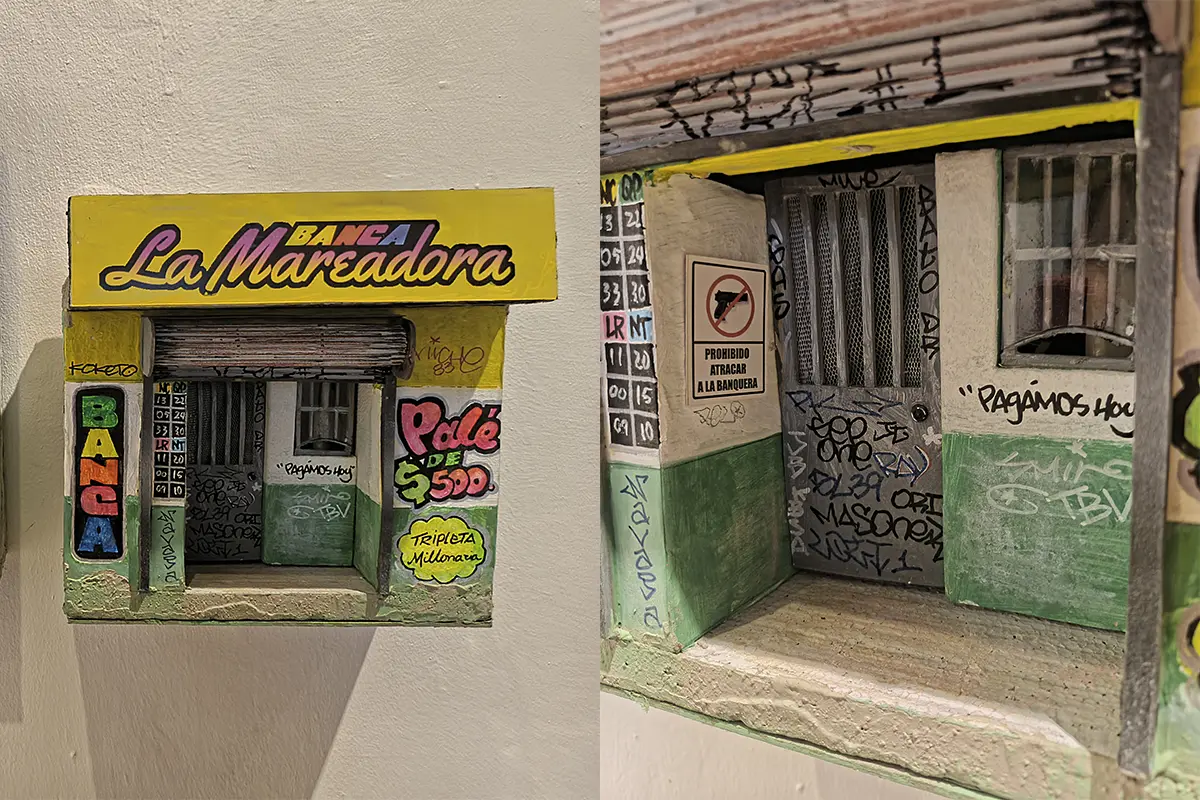
“Vueltas al Globo” is a work that critiques the lottery system. With its attractive colors, it draws in gamblers and also young Dominican women to work as cashiers. These young women, often lacking educational opportunities, find their first job here, and many never escape this multicolored confinement. They develop their lives and raise their children within this prison-like environment. The lottery shop symbolizes both hope and entrapment.
Year:2022, Medium: Recycled materials from the beaches of Santo Domingo,Hand Made, Exhibited: 1.Fase Uno ,2023, Centro Cultural España, Santo Domingo, Dominican Republic and 2.Casas+Islas, 2024, Punto Urban Art Museum, Salem, Ma
Mall Rural
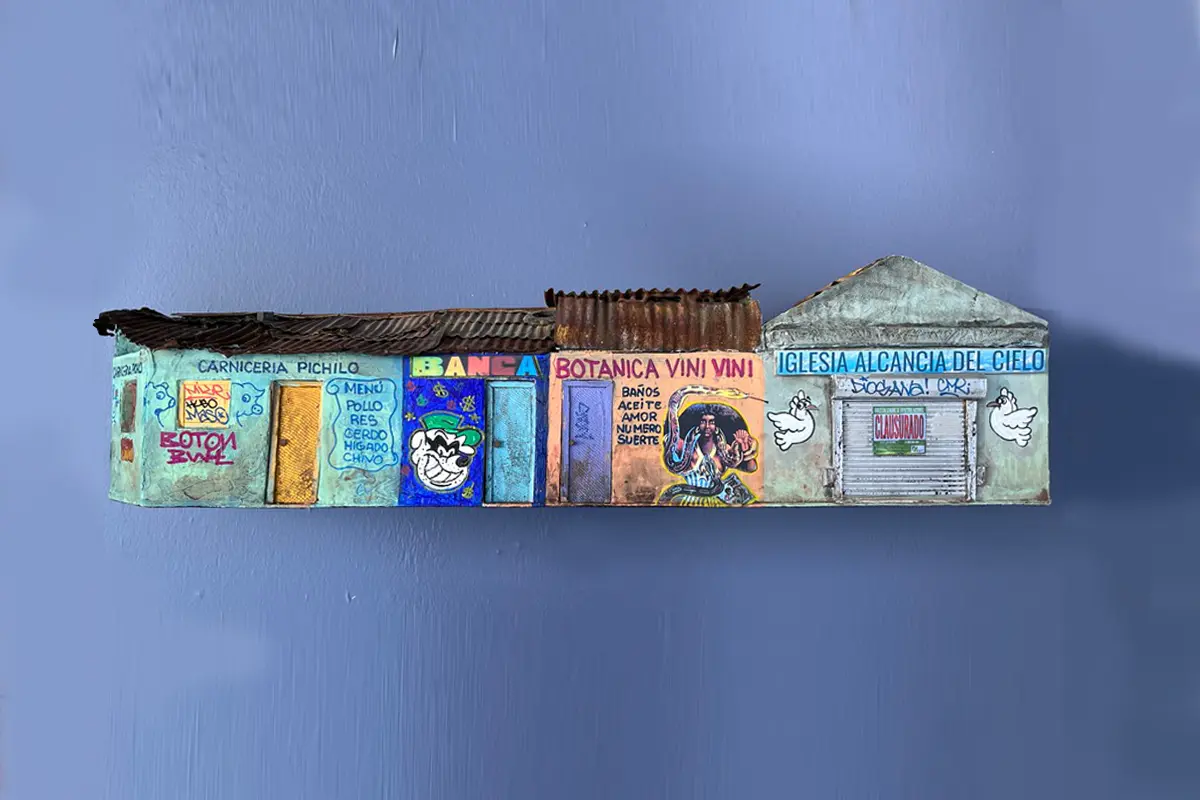
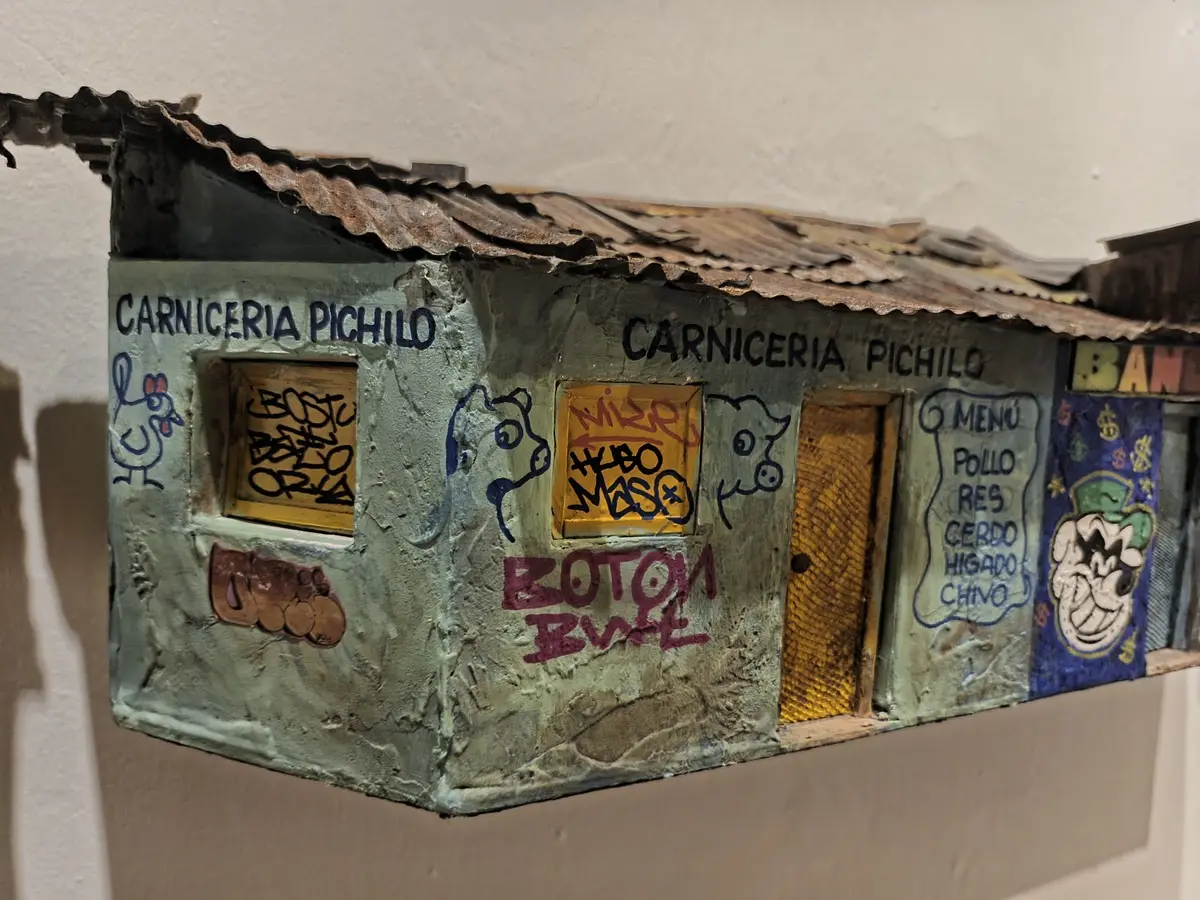
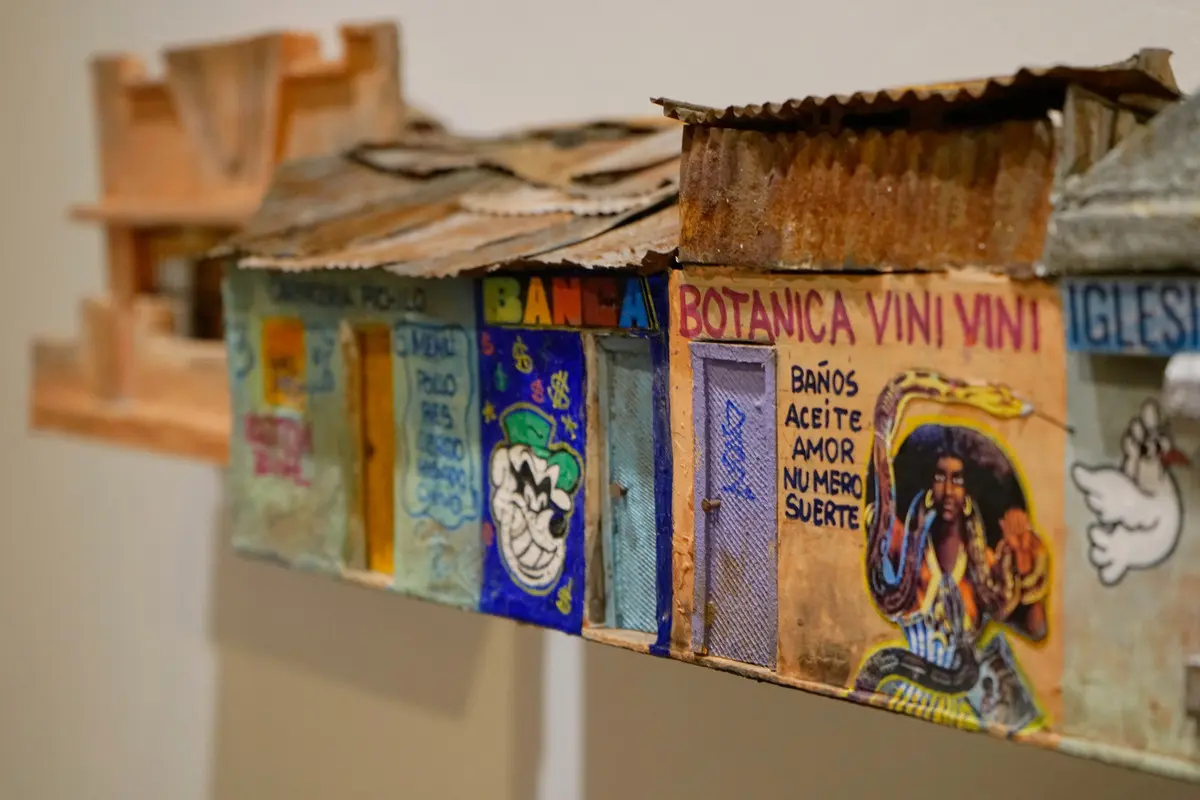

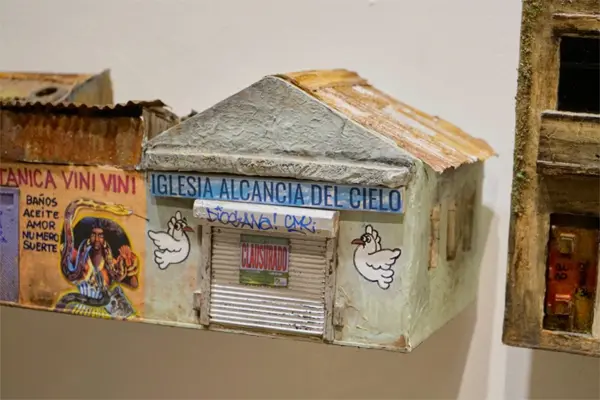
- Butchery: The signs show the reality of animal sacrifice, highlighting the fear of the animals as a warning.
- Dominican Betting Bank: The entry features a caricature of a villain from a Disney comic strip.
- Botany: Sale of products to attract luck, love, and success in the lottery, with a central figure for women: Santa Marta La Dominadora, one of the most popular deities in Dominican Santeria.
- Evangelical Church: Criticism of evangelical Christianity and churches that pressure their parishioners to give tithes as a condition to achieve divine grace. This church is called the “Piggy Bank Church of Heaven”, suggesting that what is offered on earth is received in heaven. Nearly 18,000 independent and conciliar congregations operate in the Dominican Republic, according to the Dominican Council of Evangelical Unity (Codue).
Un sueño Inconcluso


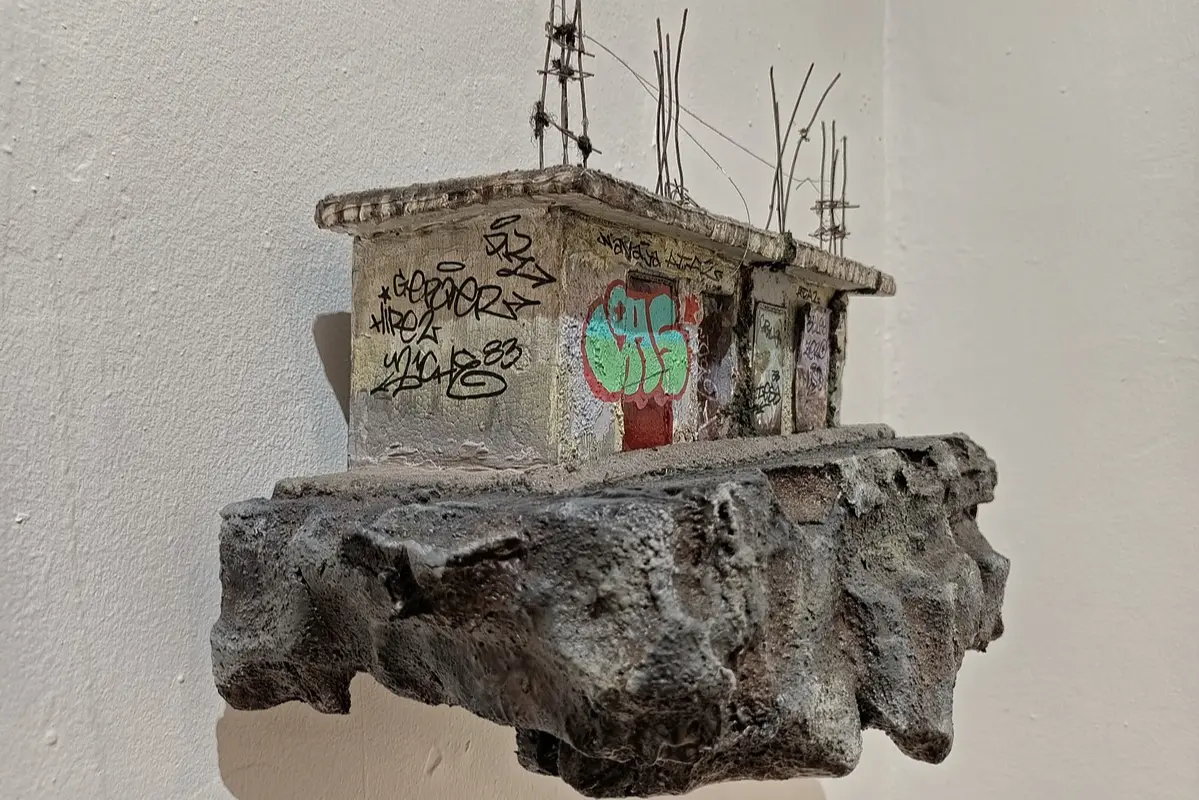
Un Sueño Inconcluso This piece represents the frustrated dream of many Dominicans who cannot finish their house due to various factors: loss of employment, increase in the prices of construction materials, or even death. It can also reflect the situation where a couple decides to divide their assets and put the property up for sale, resulting in a project that is never completed. What began as an aspiration becomes the ruin of a dream, with mold, vandalism and neglect destroying the unfinished house.
According to the Registry of Titles in the Dominican Republic, “improvement is considered as everything built, nailed, planted and attached to the land, permanently or temporarily, that increases its value.” It is common in Dominican poor neighborhoods to plan more floors in a house with the desire to improve the property to rent or expand the home. Many times the economic resources do not reach the low-income home and the rods rust, leaving the idea of future columns of an imaginary future. WORK Based on the construction of the Cien Fuegos neighborhood.
Year:2019, Medium: Recycled materials from the beaches of Santo Domingo,Hand Made, Exhibited: 1.Fase Uno ,2023, Centro Cultural España, Santo Domingo, Dominican Republic
La Casa del Guachi
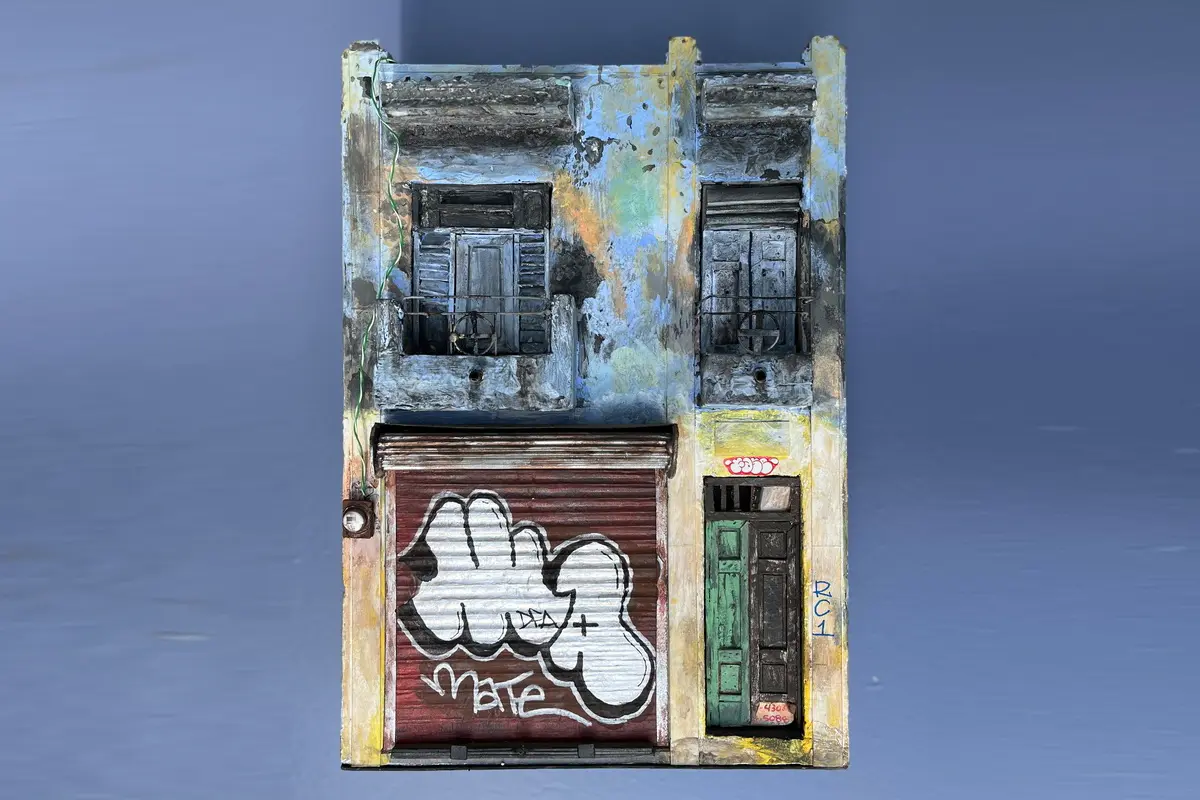

La Casa de Guachi is an old Building at Mella Ave. in Santo Domingo. This building was the author’s first project in which he worked on the facade. Although the building is in ruins, the author considers it a very beautiful and unique building in the city. Then on another visit they informed us that in the building lives a security guard who call in Dominican Republic “Guachi”. From the word Guachimán, a form adapted from the English watchman. This building has a commerce in the first floor something that is very common in this avenue. It speaks about the history of this Avenue and it changes through time Mella Avenue was the most important commercial artery in the capital,Santo Domingo, was a center of innovation and commercial dynamism with a wide range of establishments at the beginning of the last century.Mella Avenue was a center of innovation and commercial dynamism with a wide range of establishments.
Year:2019, Medium: Recycled materials from the beaches of Santo Domingo,Hand Made, Installation: Wall or podium Exhibited: 1.Fase Uno ,2023, Centro Cultural España, Santo Domingo, Dominican Republic .
Cafetera

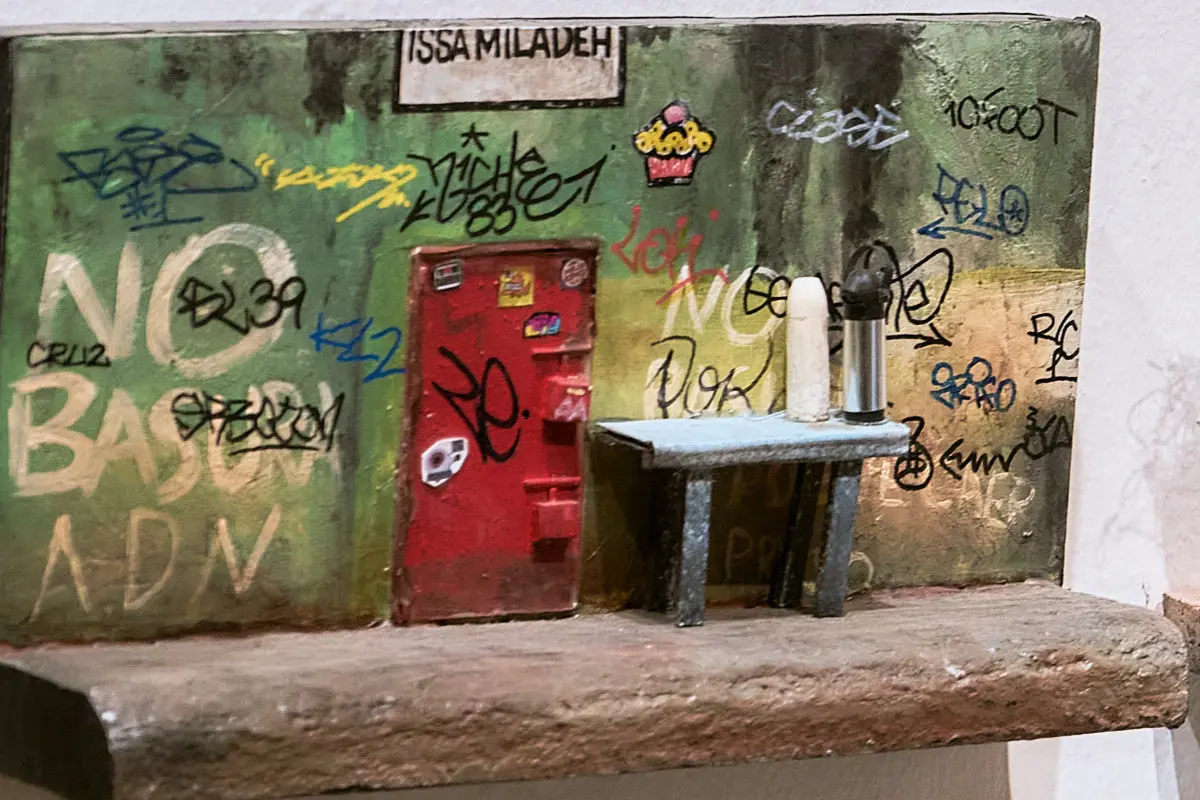
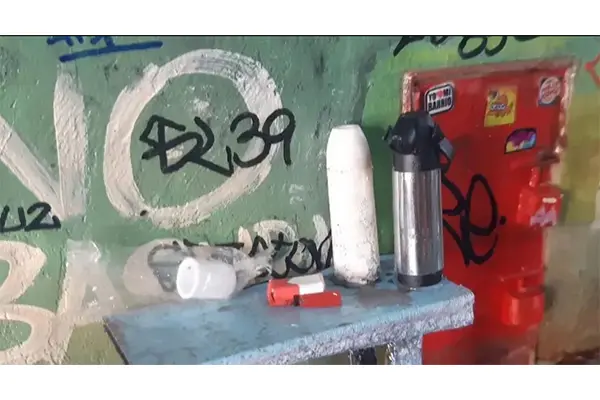

Facade of Cafetera a Coffee Space in Avenida Mella, Santo Domingo. This facade represents the informal employment common in the Dominican Republic. Many people set up coffee or tea stands in front of their homes to generate income, either to sustain themselves or to earn a little extra for the household. The customers are passersby who walk by daily.
“Informal vendors struggle each day to make a living, providing for their families and trying to move forward. They do not have a fixed salary but instead rely on selling goods, which for many is quite profitable and generates income higher than the minimum wage.” (Source: CDN newspaper, article titled “El empleo informal se apodera de las calles de RD.”
Year:2019, Medium: Recycled materials from the beaches of Santo Domingo,Hand Made, Installation: Wall or podium Exhibited: 1.Fase Uno ,2023, Centro Cultural España, Santo Domingo, Dominican Republic.
Se Alquila con Guifai


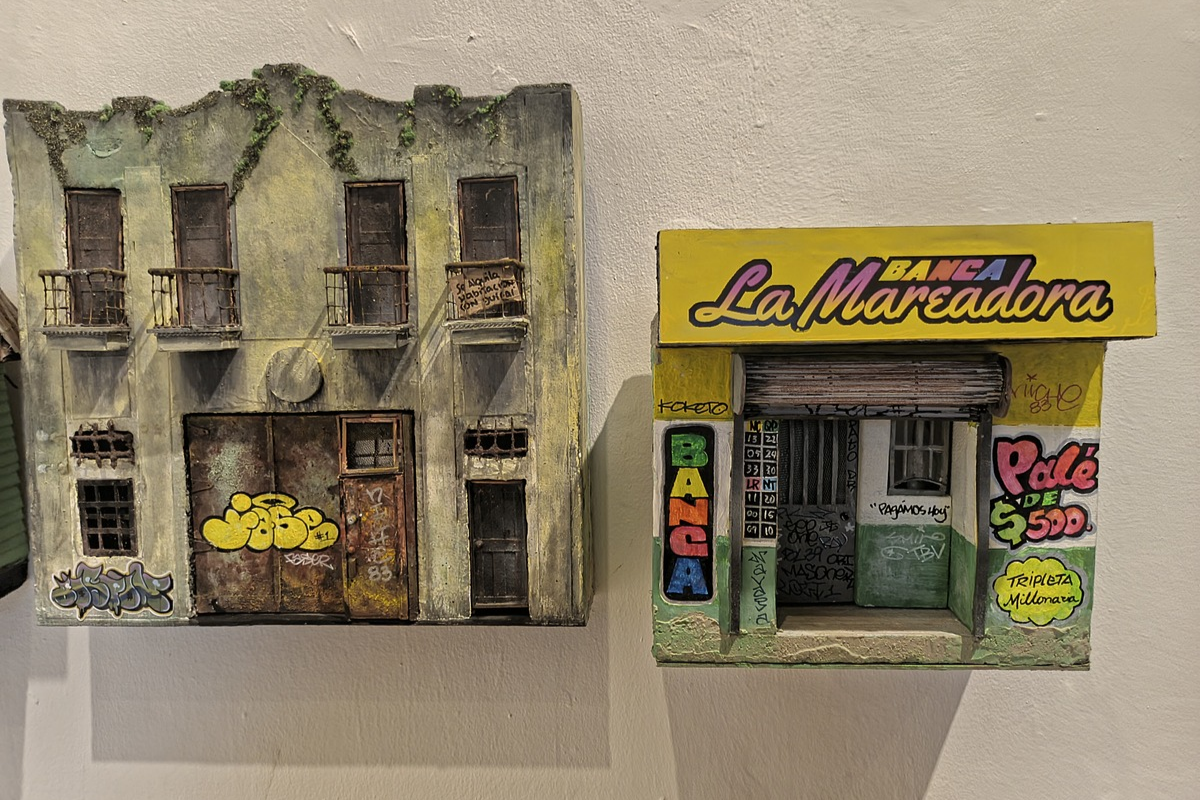
Se Alquila Guifai this building, located in the Villa Duarte neighborhood of Santo Domingo Este, is now in ruins. However, the author sees it as a representation of the economic prosperity in the Dominican Republic during the 1920s and 1930s, following the first U.S. invasion of the country.
Year:2020, Medium: Recycled materials from the beaches of Santo Domingo,Hand Made, Exhibited: 1.Fase Uno ,2023, Centro Cultural España, Santo Domingo, Dominican Republic.
El proceso y no de Kafka


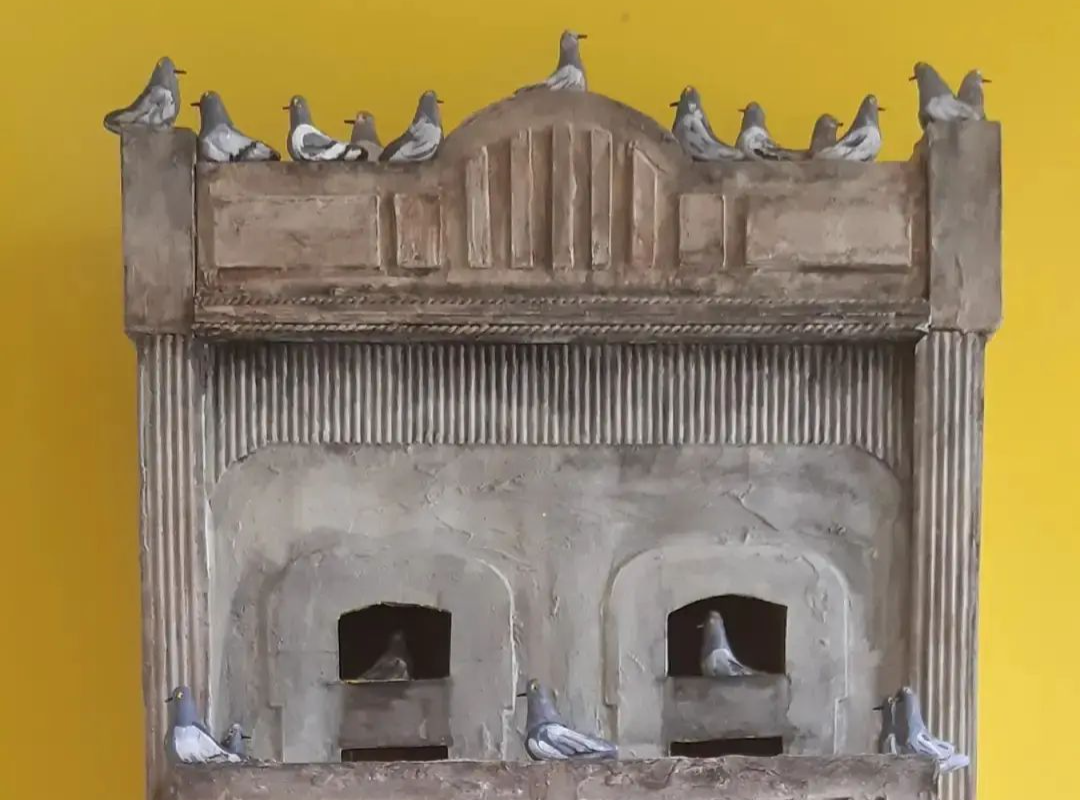
The main reason behind the creation of this project is to preserve and give a place in our historical memory to some of the most beautiful buildings in our country, which have been somewhat forgotten. By combining different techniques and using recycled materials that I restored and modified as needed, I aimed to convey a social message: to value things and people while they are here and there is time, including both buildings and the environment. Thanks to the knowledge I acquired since the early 80s with graffiti, which was the catalyst that brought me closer to drawing, printmaking, painting, and sculpture, I embarked on this adventure that I hope will not only excite me and others, but also convey the message I wish to share.
As I read somewhere: “Art plays a mediating and driving role in communication, as the artist, through their creation, transmits not only emotions but also messages, prompting us to reflect on our existence, social issues, and life in general.” Made 100% by hand with recycled materials, recycling allows us to reduce the spaces for final disposal of solid waste, having a tremendous positive social and environmental impact. Recycling reduces the negative externality of pollution, helping to protect public goods such as the environment and biodiversity.
Year:2020, Medium: Recycled materials from the beaches of Santo Domingo,Hand Made, Exhibited: 1.Fase Uno ,2023, Centro Cultural España, Santo Domingo, Dominican Republic.
Se cura pecho apretao
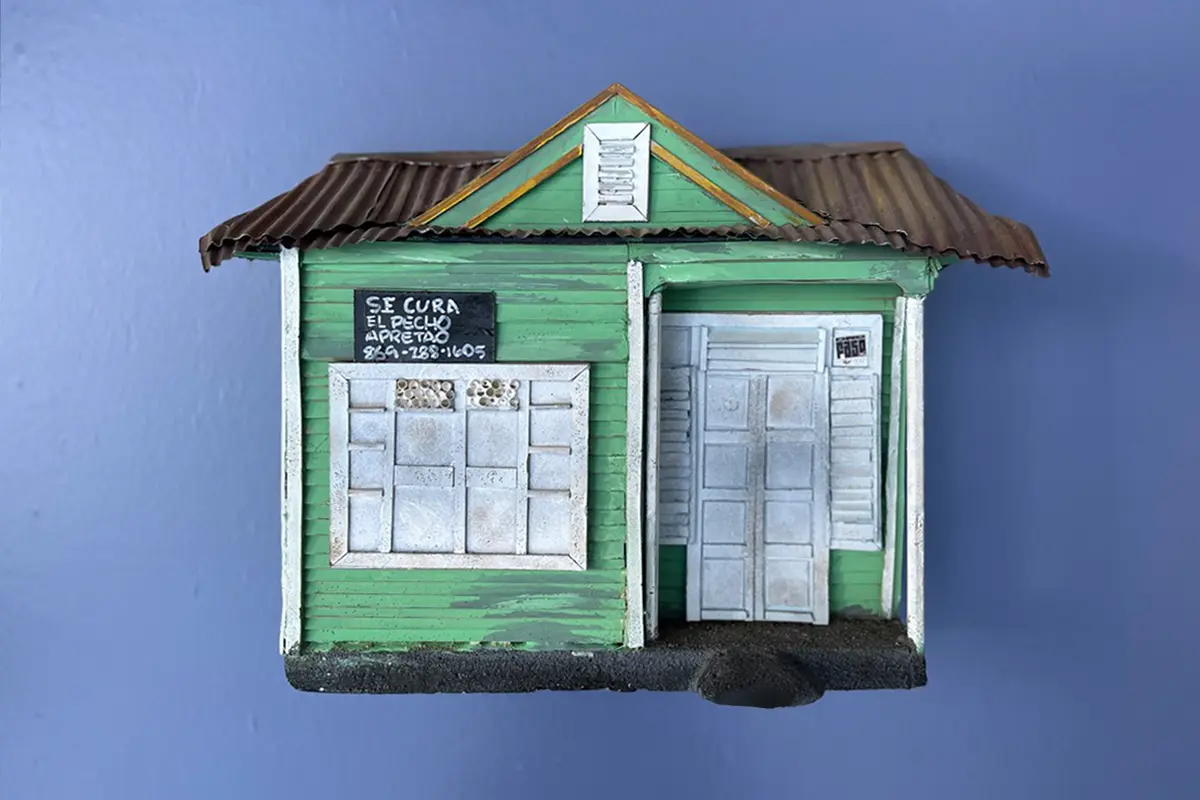
This piece represents a building in Santiago de los Caballeros, Dominican Republic. The facade displays a typical sign that says “Se cura el pecho apretao”, indicating a healing service performed by local elders and experts in traditional remedies. This type of establishment is common in the country.
Home remedies or alternative medicine have become the ideal choice for people seeking antidotes rooted in Dominican culture, and they find “cures” for asthma, commonly referred to as “pecho apretao.”
Year:2020, Medium: Recycled materials from the beaches of Santo Domingo,Hand Made, Installation: Wall Exhibited: 1.Fase Uno ,2023, Centro Cultural España, Santo Domingo, Dominican Republic.
EL Portal

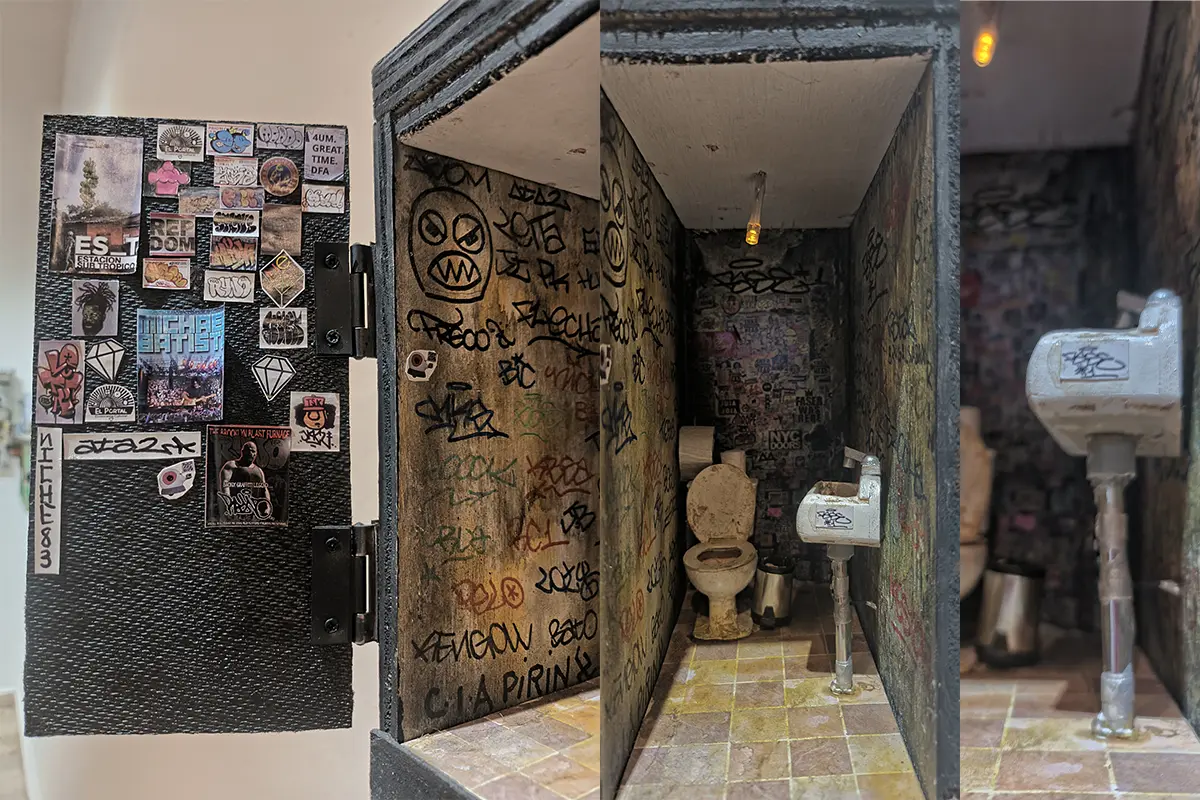
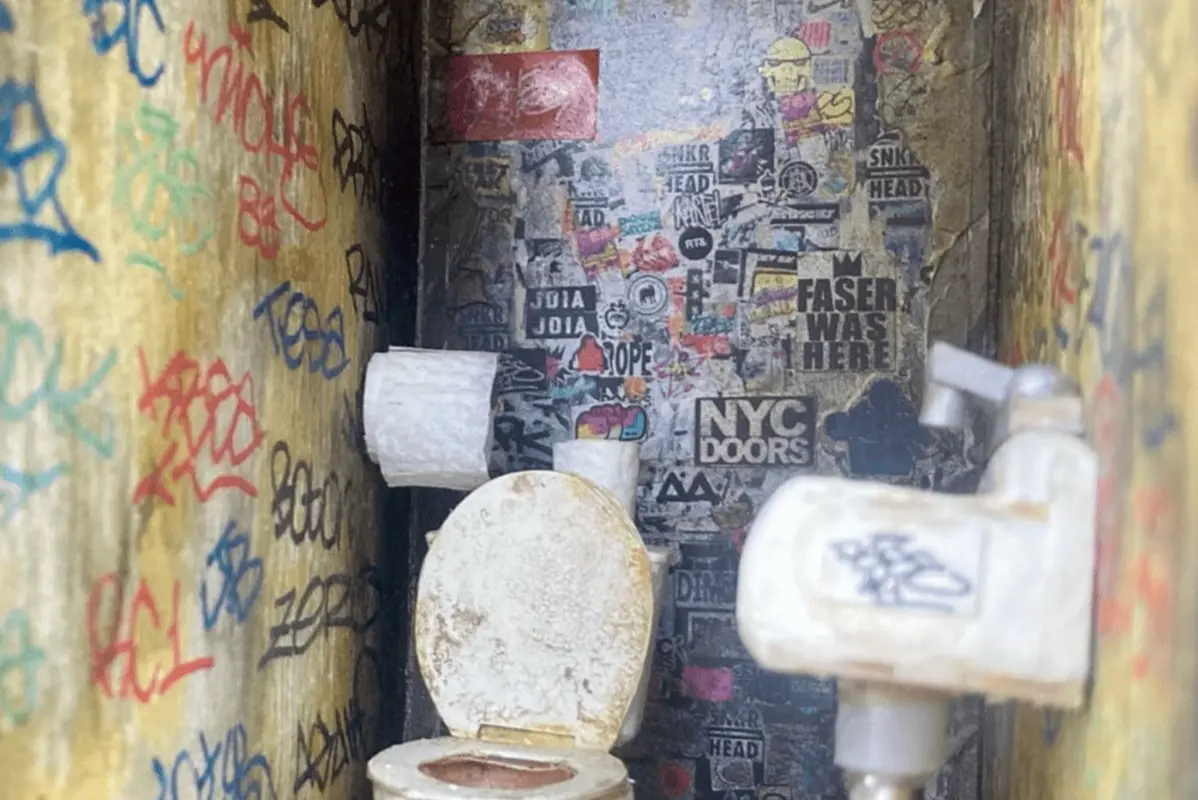
This small bathroom is an artwork from a well-known underground cultural hub in Santo Domingo called “El Portal Cultural.” It is a gathering place for a diverse group of artists from our society, hosting cultural enrichment activities for all types of audiences. The space brings together poetry, dance, painting, sculpture, graffitt and other activities that foster art and knowledge.The bathroom walls bear the marks left by its visitors.
Year:2020, Medium: Recycled materials from the beaches of Santo Domingo,Hand Made, Exhibited: 1.Fase Uno ,2023, Centro Cultural España, Santo Domingo, Dominican Republic. 2.Casas+Islas, 2024, Punto Urban Art Museum, Salem, Ma
Restaurante Vegetariano

Zona Colonial, Santo Domingo
Facade of a restaurant for sale. Year:2020, Medium: Recycled materials from the beaches of Santo Domingo,Hand Made, Exhibited: 1.Fase Uno ,2023, Centro Cultural España, Santo Domingo, Dominican Republic.
Barra Payan

Barra Payan is cheerful yellow colonial facade captures a slice of nightlife in the Zona Colonial. It’s common to see someone leaning against one of these walls, sipping on a carnation milkshake with a fruit from the menu of a local establisments call Barra Payan, and smoking a few cigarettes, leaving behind evidence of a nocturnal passerby in the historic district.
Year:2020, Medium: Recycled materials from the beaches of Santo Domingo,Hand Made, Exhibited: 1.Fase Uno ,2023, Centro Cultural España, Santo Domingo, Dominican Republic.
Casa OM
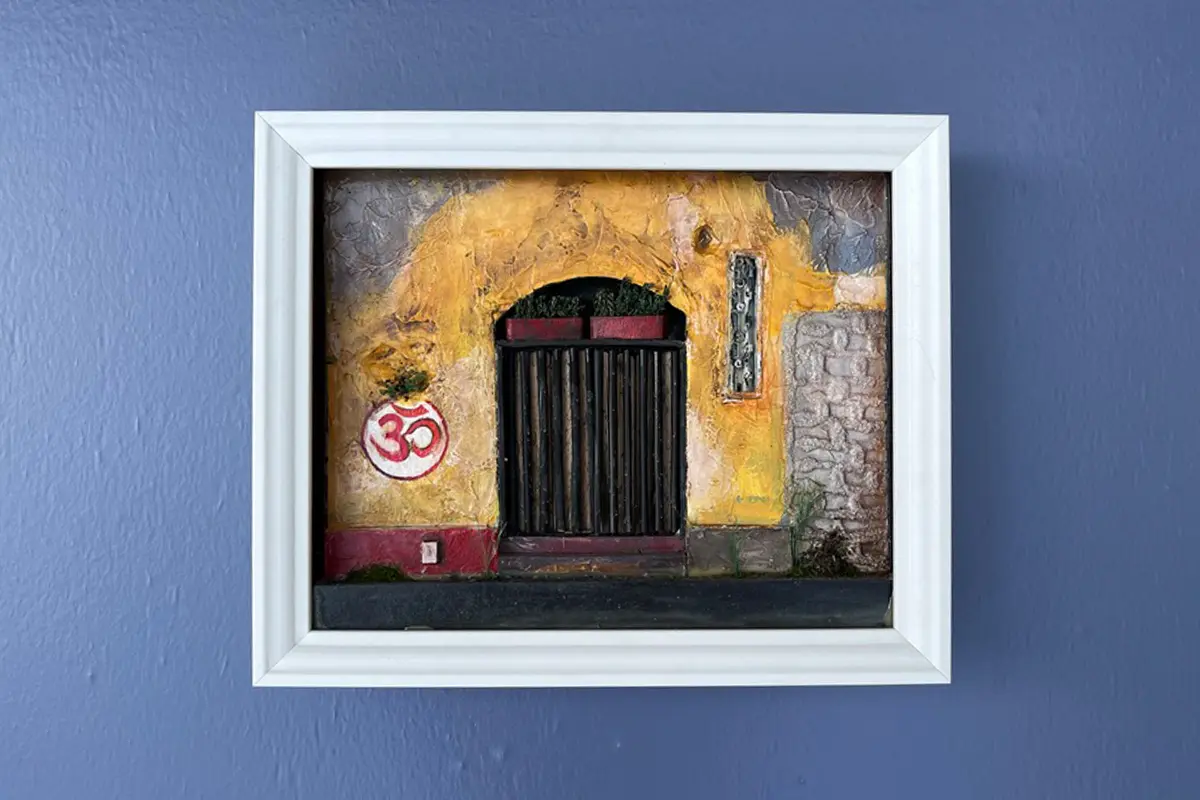
Zona Colonial, Santo Domingo
Facade of a restaurant for sale
Year:2020, Medium: Recycled materials from the beaches of Santo Domingo,Hand Made, Measurement with frame 11.25”x9.25”x2.5″, 3 pounds, Installation: Wall Exhibited: 1.Fase Uno ,2023, Centro Cultural España, Santo Domingo, Dominican Republic.
DFA Crew
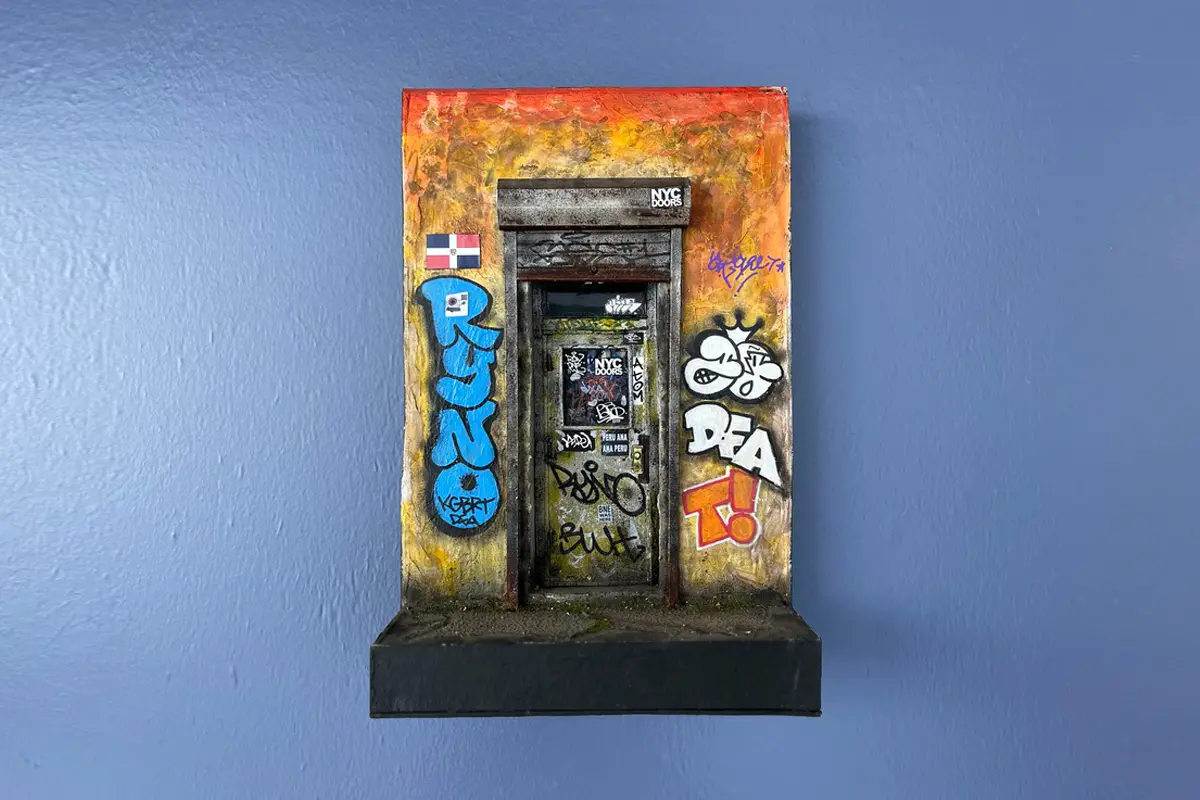
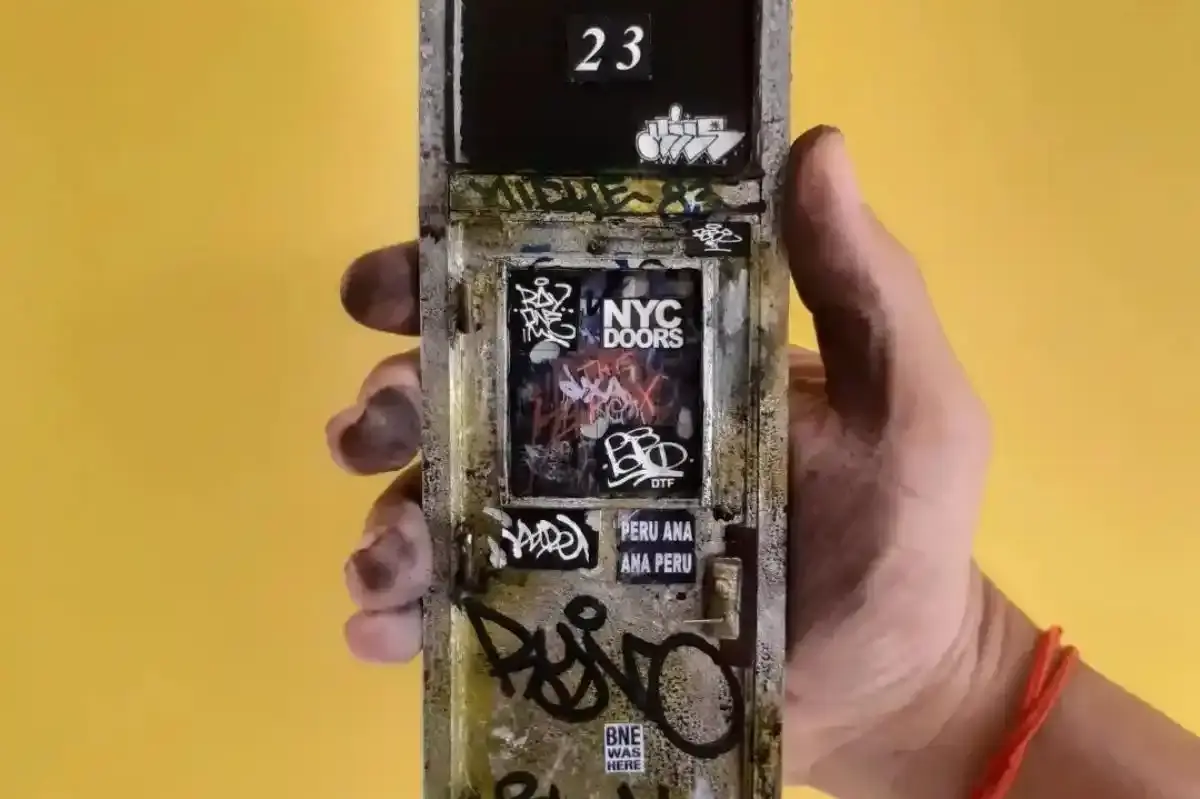
DFA is a Crew of graffiti of the 90’s It’s fascinating to witness how FUTURA 2000 has remained relevant and fresh after more than 50 years in graffiti culture. His work continues to be both contemporary and authentic. I was fortunate to attend the exhibition with MATE DFA, another graffiti legend vandal of the 90s in New York City and one who strated the crew DFA. Both of us were amazed by the showcase and had the chance to reconnect with old friends. We signed black books and reminisced about the 90s, reflecting on how the graffiti movement has shaped our lives.
Year:2021, Medium: Recycled materials from the beaches of Santo Domingo,Hand Made, Exhibited: 1.Fase Uno ,2023, Centro Cultural España, Santo Domingo, Dominican Republic.
La Corotera
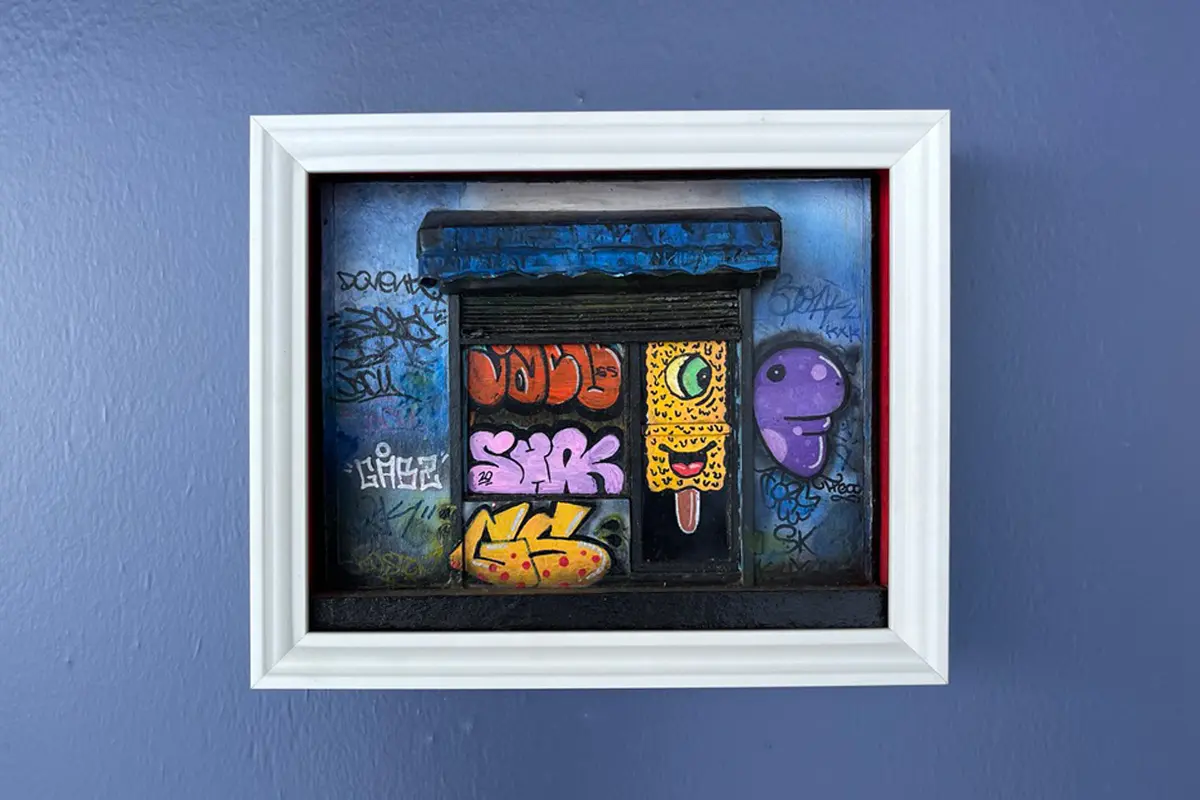
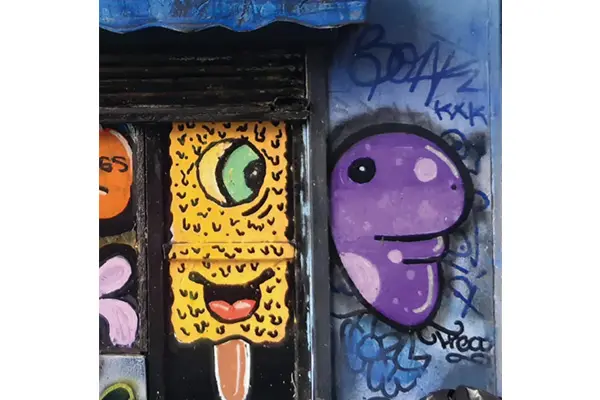

This facade holds significant value, as the building once housed theater costumes, carnival outfits, and everything related to the arts. In the photo, you can see graffiti by prominent artists such as Freco, Mr. Letta, Gabs, Jacu, and Dovente, among others, who contributed their art to stage design and various theatrical expressions.
Year:2022, Medium: Recycled materials from the beaches of Santo Domingo,Hand Made, Exhibited: 1.Fase Uno ,2023, Centro Cultural España, Santo Domingo, Dominican Republic.
Santa Barbara Artes
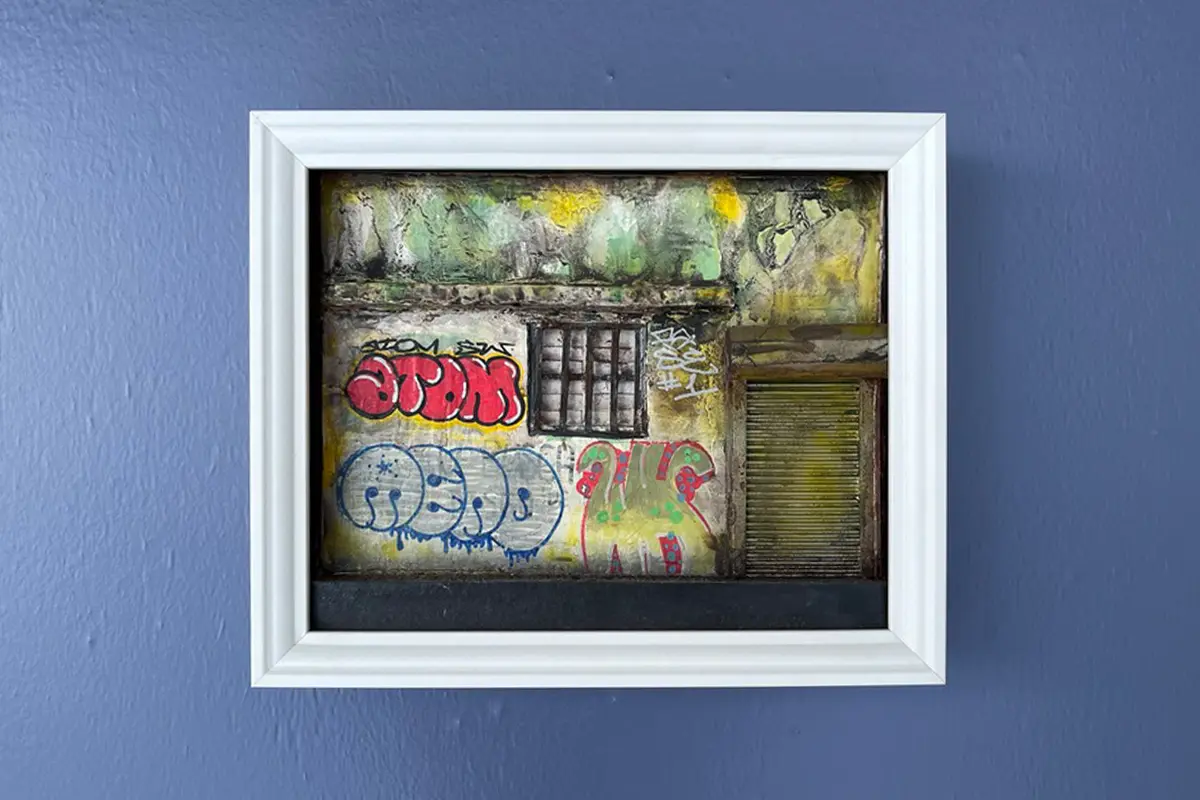

This facade serves as a reminder that Santa Barbara is a space dedicated to cultural art. This significance stems from an event called the Bienal Marginal, created by the visual artist Silvano. “The Bienal Marginal reached and coexisted with these segregated sectors of society, integrating art into their environment and stirring the aesthetic pleasure that had been somehow denied to them. The event, to some extent, compelled people from sectors unfamiliar with the neglected areas of Santa Barbara to visit and view the artworks on display, confronting them with the reality of the surroundings in which the art was presented.”Santa Barbara: Art and Marginality By Carlos Sangiovanni.
Year:2021, Medium: Recycled materials from the beaches of Santo Domingo,Hand Made, Exhibited: 1.Fase Uno ,2023, Centro Cultural España, Santo Domingo, Dominican Republic.
Tattoo Store NY
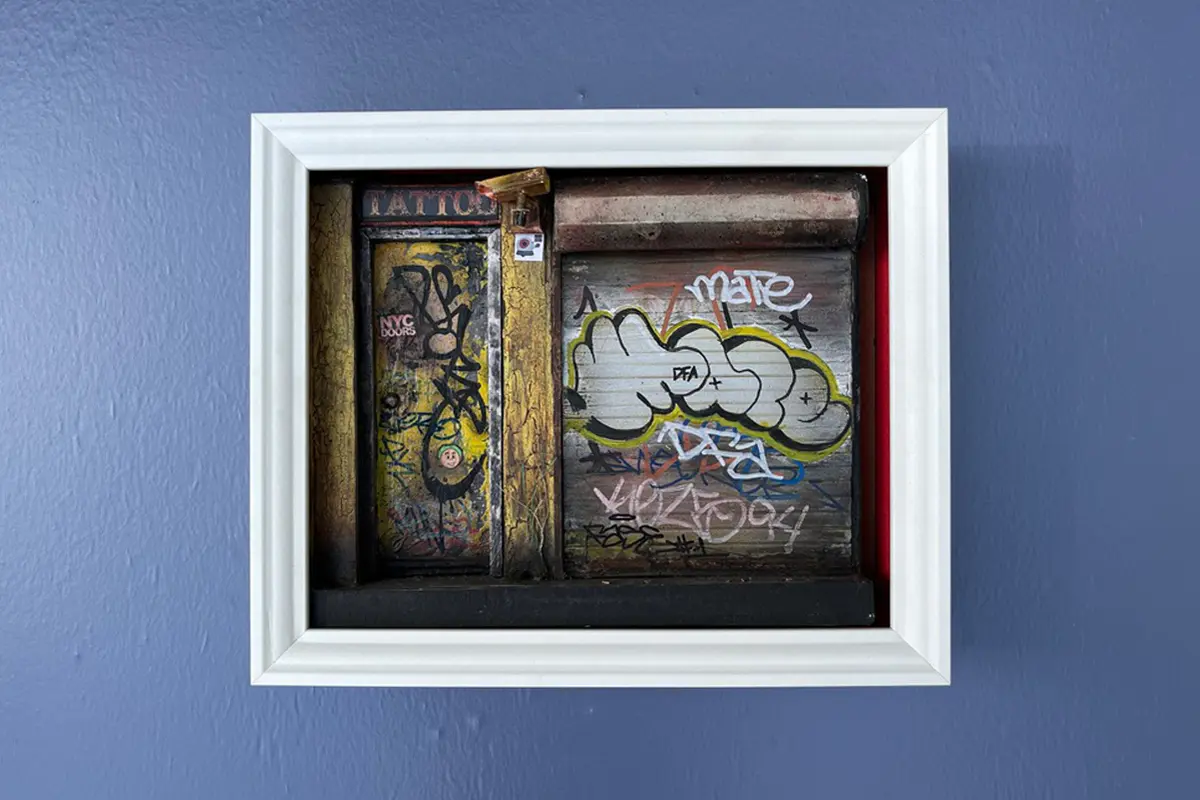

This facade represents a Tattoo shop , featuring works by renowned graffiti artists. Over the past two decades, tattoos have become an increasingly common part of American culture. But it wasn’t that long ago that those with tattoos were marginalized by the mainstream. The once-deviant practice and its colorful history are the subjects of the New-York Historical Society’s exhibition, Tattooed New York . The show traces the 300-year-plus history of tattooing in NYC, beginning with the area’s Native American tribes in the early 1700s and continuing up until today.
Year:2020, Medium: Recycled materials from the beaches of Santo Domingo,Hand Made, Exhibited: 1.Fase Uno ,2023, Centro Cultural España, Santo Domingo, Dominican Republic.
Joe 136 NY
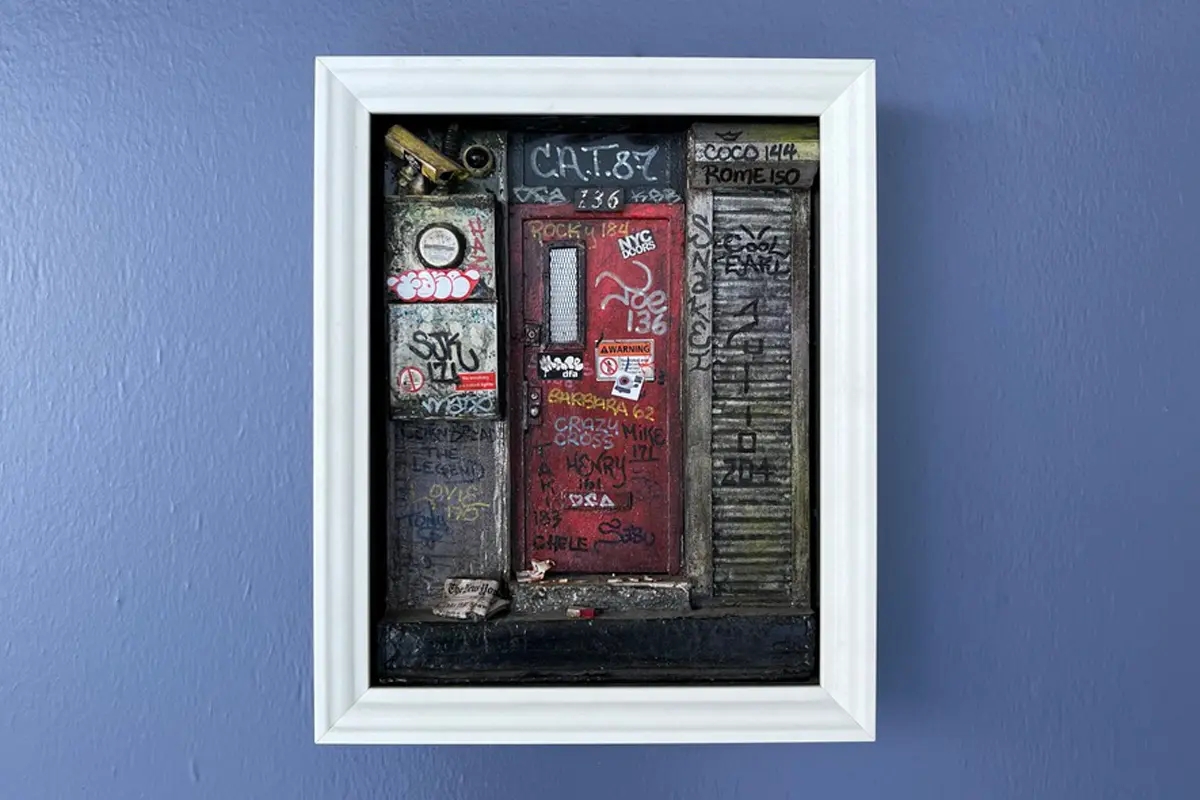
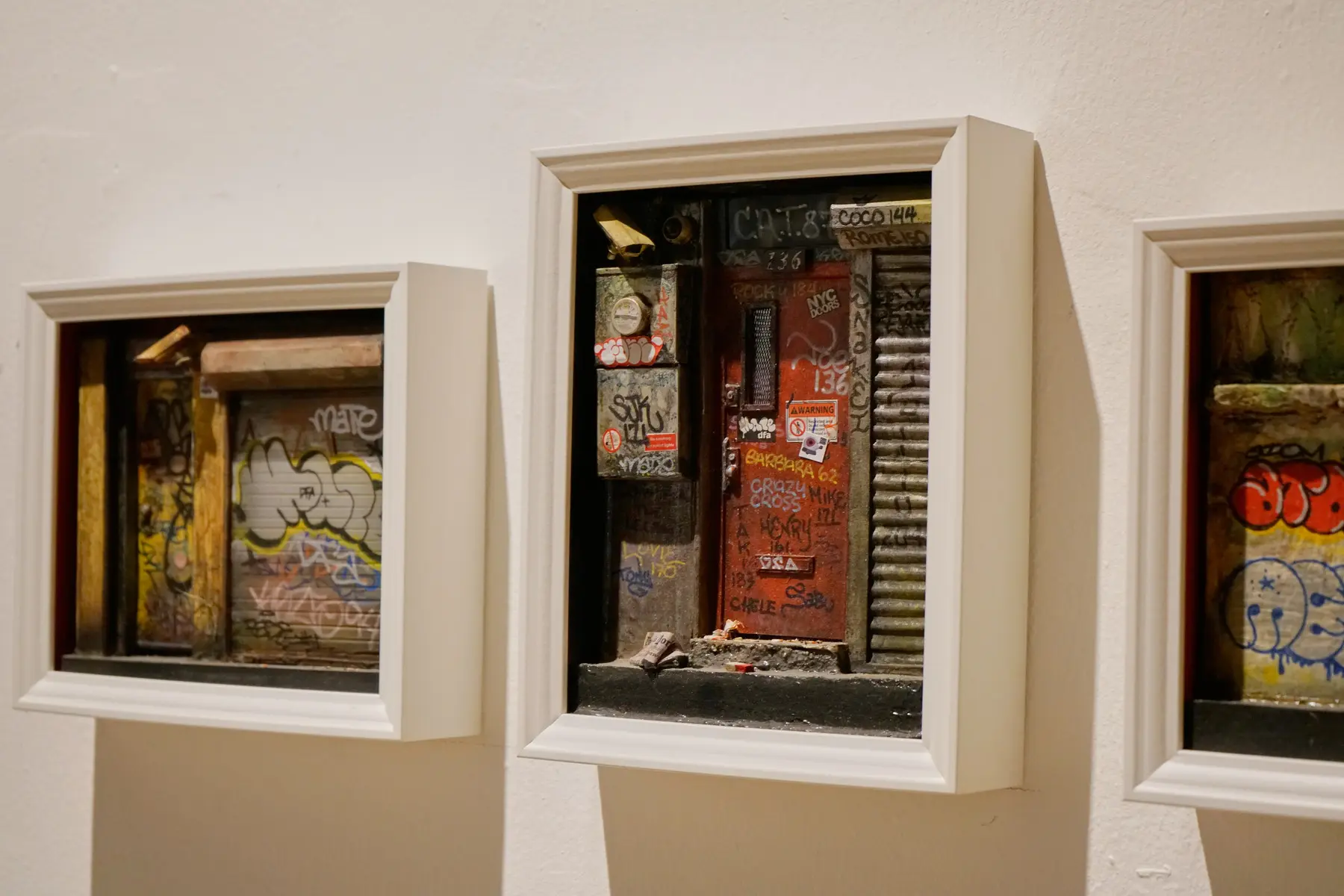
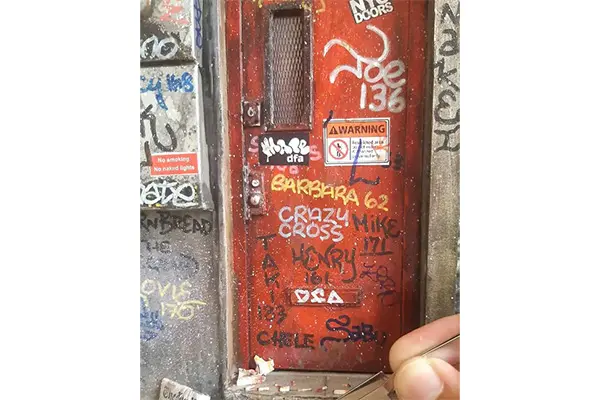
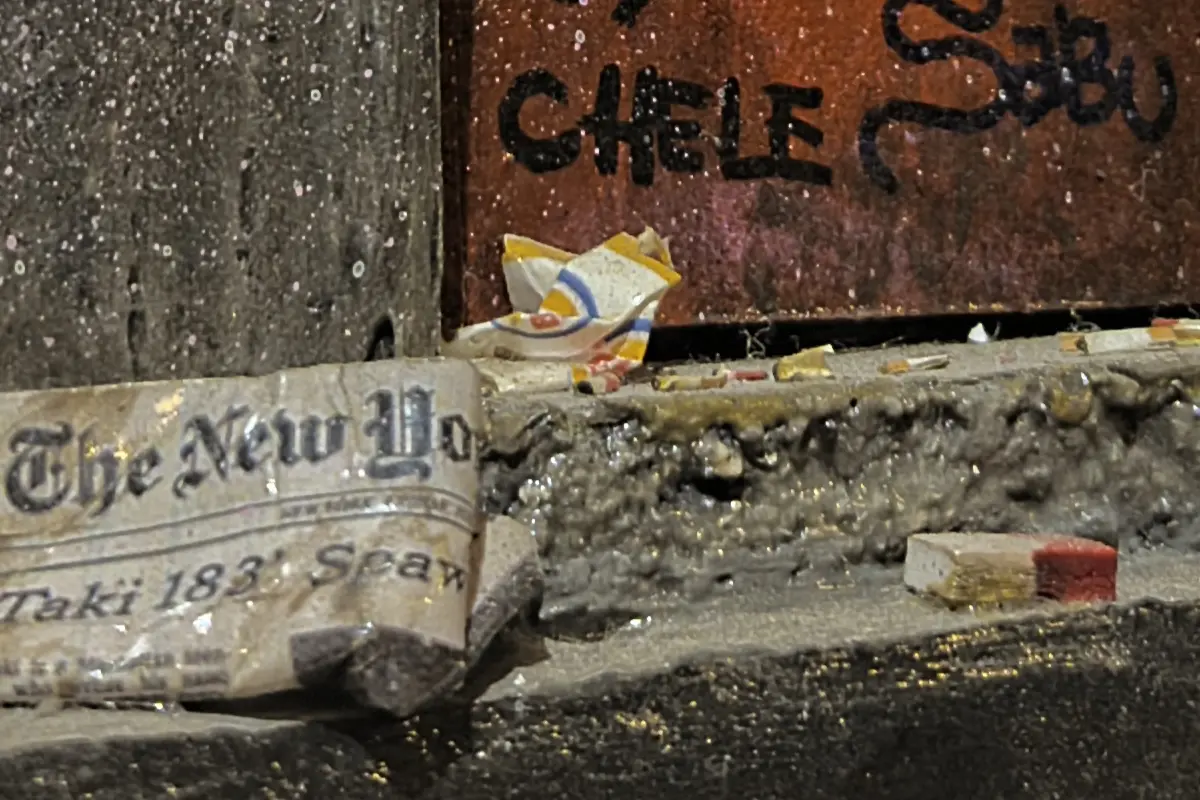
The facade is inspired by the early graffiti writers of New York City, with a special tribute to the Dominican artist Joe 136, who was one of the most influential figures in graffiti culture during the 1960s. At the center is JOE-136, who might have been the first king of Broadway Local during 1970-71. He has rarely received the credit for being one of the pioneers who helped start the movement.
Year:2020, Medium: Recycled materials from the beaches of Santo Domingo,Hand Made, Exhibited: 1.Fase Uno ,2023, Centro Cultural España, Santo Domingo, Dominican Republic.




